ELECTRIC CLASSIC CARS
Revival Autos' Electric Classics: A Journey Through Time and Innovation

Table of Contents
Introduction: Electric classic cars
Embark on an illuminating journey as we delve into the world of Electric classic cars. From the captivating history that shaped these timeless icons to the cutting-edge technology that fuels their revival, our comprehensive guide explores every facet of this automotive revolution. We’ll uncover the benefits and challenges, reveal the secrets of conversion, and witness the intriguing comparison between electric classics and their gasoline counterparts. Navigate through best practices, understand the pivotal role these cars play in preserving automotive heritage, and gain insights into the future of this eco-conscious movement. Get ready to power up your knowledge and join us in the electrifying world of Electric classic cars, driven by Revival Autos.
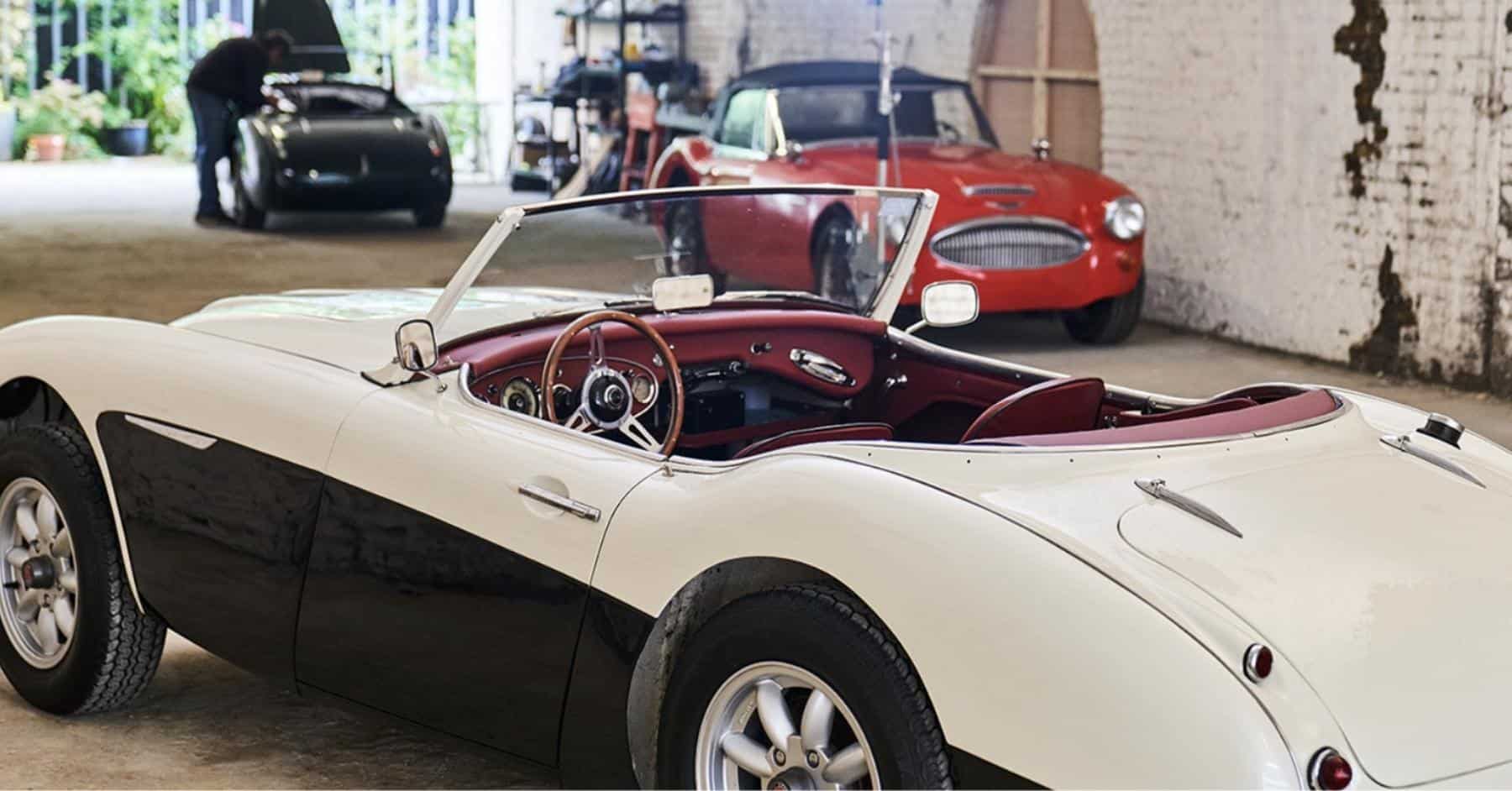
Electric classic cars by Revival Autos
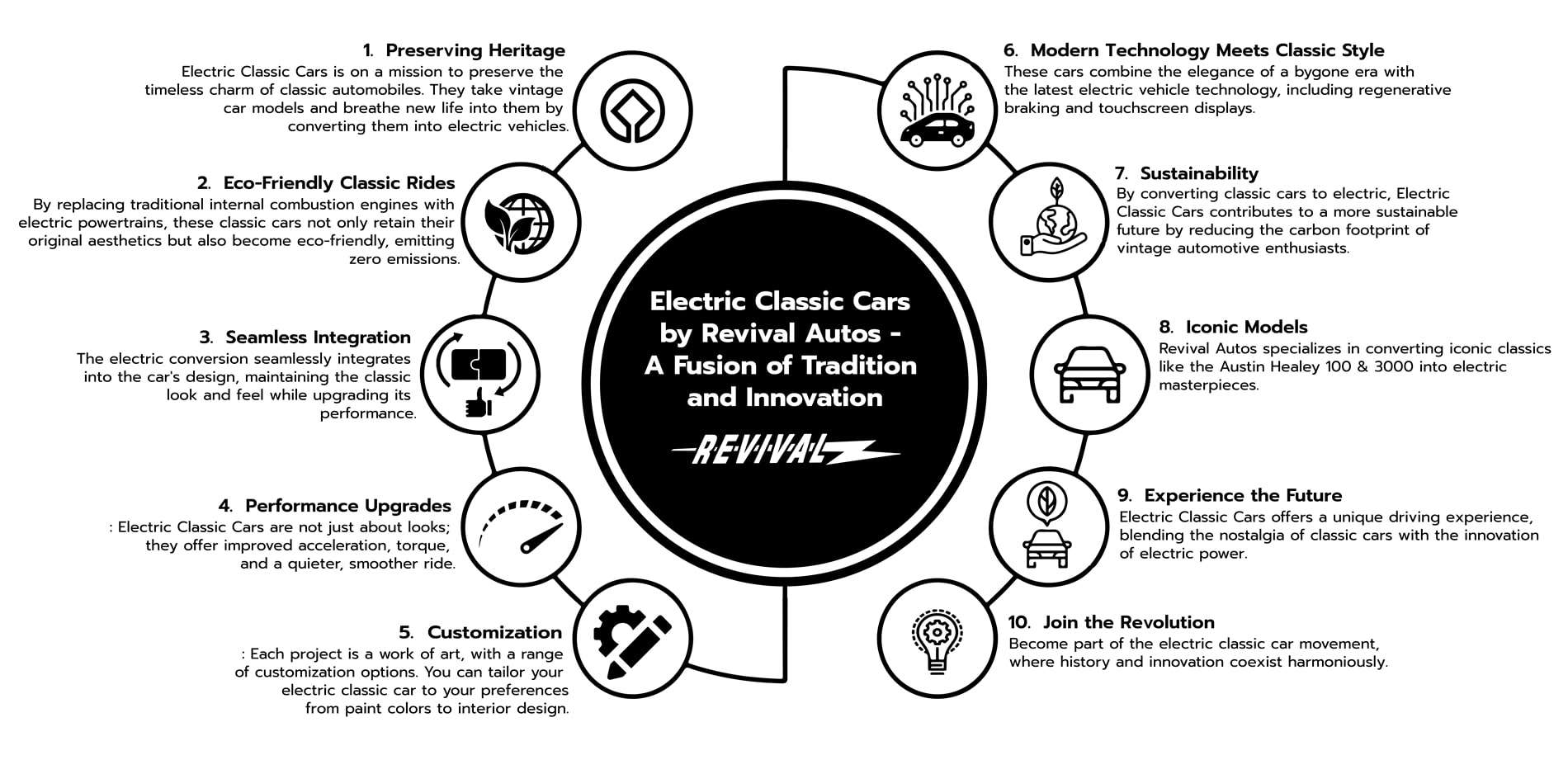
- Preserving Heritage: Electric classic cars is on a mission to preserve the timeless charm of classic automobiles. They take vintage car models and breathe new life into them by converting them into electric vehicles.
- Eco-Friendly Classic Rides: By replacing traditional internal combustion engines with electric powertrains, these classic cars not only retain their original aesthetics but also become eco-friendly, emitting zero emissions.
- Seamless Integration: The electric conversion seamlessly integrates into the car’s design, maintaining the classic look and feel while upgrading its performance.
- Performance Upgrades: Electric classic cars are not just about looks; they offer improved acceleration, torque, and a quieter, smoother ride.
- Customization: Each project is a work of art, with a range of customization options. You can tailor your electric classic car to your preferences, from paint colors to interior design.
- Modern Technology Meets Classic Style: These cars combine the elegance of a bygone era with the latest electric vehicle technology, including regenerative braking and touchscreen displays.
- Sustainability: By converting classic cars to electric, Electric classic cars contributes to a more sustainable future by reducing the carbon footprint of vintage automotive enthusiasts.
- Iconic Models: Revival Autos specializes in converting iconic classics like the Austin Healey 100 & 3000 into electric masterpieces.
- Experience the Future: Electric classic cars offers a unique driving experience, blending the nostalgia of classic cars with the innovation of electric power.
- Join the Revolution: Become part of the electric classic car movement, where history and innovation coexist harmoniously.
Electric classic cars: What exactly are they?
Electric classic cars represent a harmonious fusion of vintage automotive craftsmanship and contemporary electric propulsion systems. This convergence results in eco-conscious, emission-free vehicles that honor the legacy of automotive excellence.
History and Significance
The realm of electric classic cars is steeped in historical context and carries profound cultural implications. This section delves into their origin, development, and enduring cultural influence, shedding light on their historical relevance and lasting impact.
The Origins and Evolution of Electric classic cars
To truly understand the significance of electric classic cars, we must start at the beginning—their origins.
Early Experiments
The idea of electric cars can be traced back to the early 19th century when inventors like Thomas Davenport and Robert Anderson created rudimentary electric vehicles. However, these early experiments were far from the classic cars we admire today. They were limited by primitive battery technology and lacked the elegance and power that would later define classic automobiles.
The Rise of Classic Cars
The zenith of classic cars dawned during the early to mid 20th century. This will usher in an era that birthed automotive legends. Notable models are Ford Model T, Chevrolet Bel Air, and Cadillac Eldorado. These models ignited collective imagination. Their allure lay in their captivating designs, formidable engines and liberating spirit they embodied. These cars metamorphosed into emblems of an epoch defined by elegance, artisanal craftsmanship and unbounded horizons of the open road.
A Fork in the Road
As the 20th century progressed, classic cars became cherished collectors’ items, admired for their aesthetic and historical value. However, they also faced growing criticism for their environmental impact. Classic cars of yesteryears were notorious for their emissions and fuel consumption. This paradox presented a challenge to classic car enthusiasts and environmental advocates alike.
Historical Significance and Cultural Impact
Electric classic cars carry a profound historical significance and cultural impact:
Bridging Eras
Electric classic cars represent a bridge between automotive eras. They marry the elegance and allure of classic car designs with the eco-consciousness of the modern age. This fusion enables us to preserve the automotive heritage of the past while embracing a greener future.
Nostalgia Reimagined
These vehicles kindle a profound sense of nostalgia, resonating not only with classic car aficionados but also with anyone who treasures the timeless allure of vintage automobiles. Electric classic cars present a unique opportunity to revisit the past while steadfastly upholding our environmental principles.
Sustainable Legacy
Perhaps most importantly, electric classic cars contribute to a sustainable legacy. By converting classic cars into zero-emission vehicles, we pay homage to our automotive roots while taking steps toward an eco-friendlier future. It’s a testament to human innovation and our commitment to preserving both the past and the planet.
In the subsequent chapters, we’ll delve deeper into the practical aspects of electric classic cars, exploring their benefits, challenges, conversion processes, and what the future holds for these remarkable vehicles. Join us on this journey as we unravel the layers of history and significance that make electric classic cars a true marvel of automotive engineering and cultural preservation.
History of Electric classic cars
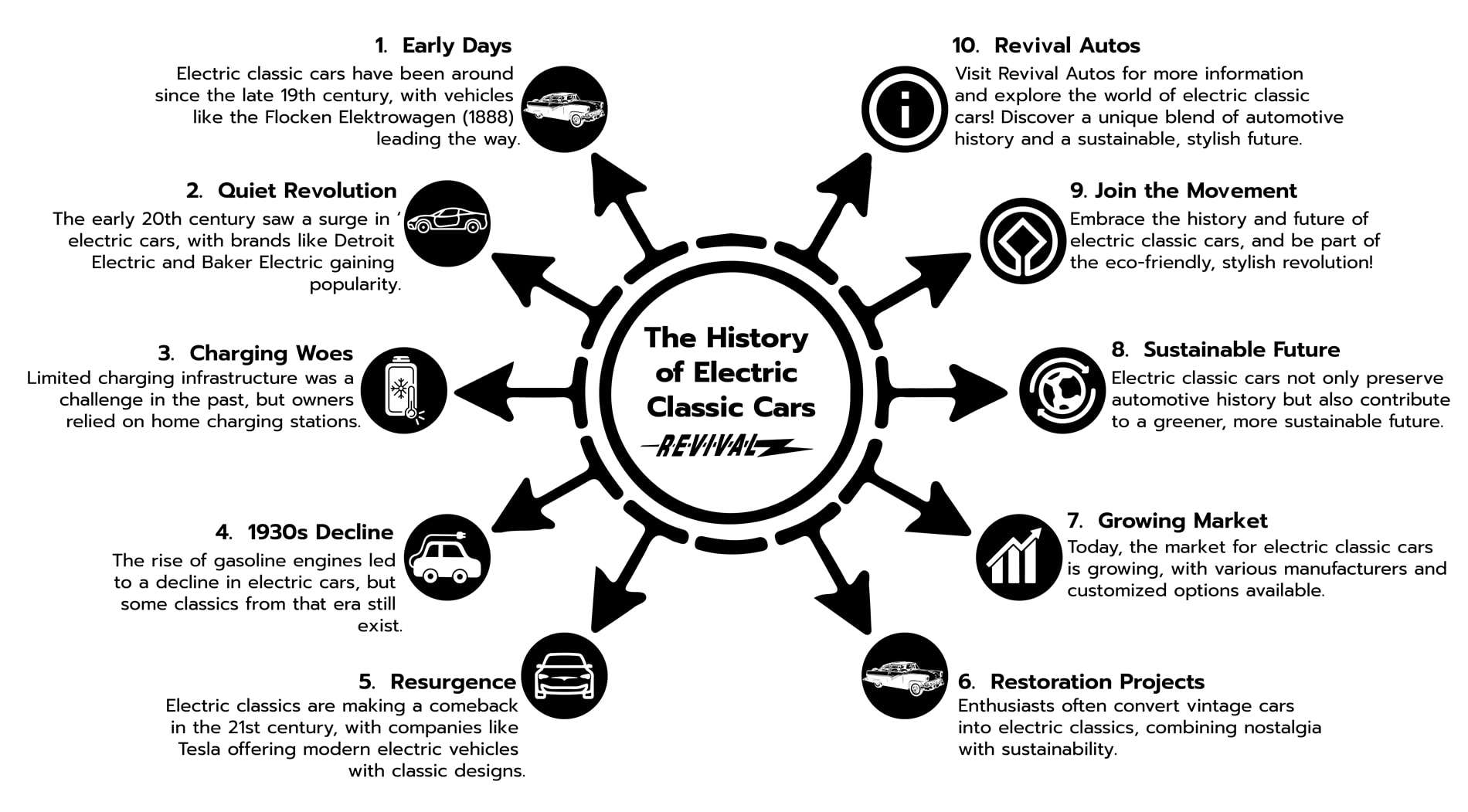
- Early Days: Electric classic cars have been around since the late 19th century, with vehicles like the Flocken Elektrowagen (1888) leading the way.
- Quiet Revolution: The early 20th century saw a surge in electric cars, with brands like Detroit Electric and Baker Electric gaining popularity.
- Charging Woes: Limited charging infrastructure was a challenge in the past, but owners relied on home charging stations.
- 1930s Decline: The rise of gasoline engines led to a decline in electric cars, but some classics from that era still exist.
- Resurgence: Electric classics are making a comeback in the 21st century, with companies like Tesla offering modern electric vehicles with classic designs.
- Restoration Projects: Enthusiasts often convert vintage cars into electric classics, combining nostalgia with sustainability.
- Growing Market: Today, the market for electric classic cars is growing, with various manufacturers and customized options available.
- Sustainable Future: Electric classic cars not only preserve automotive history but also contribute to a greener, more sustainable future.
- Join the Movement: Embrace the history and future of electric classic cars, and be part of the eco-friendly, stylish revolution!
- Revival Autos: Visit Revival Autos for more information and explore the world of electric classic cars! Discover a unique blend of automotive history and a sustainable, stylish future.
Types of Electric classic cars
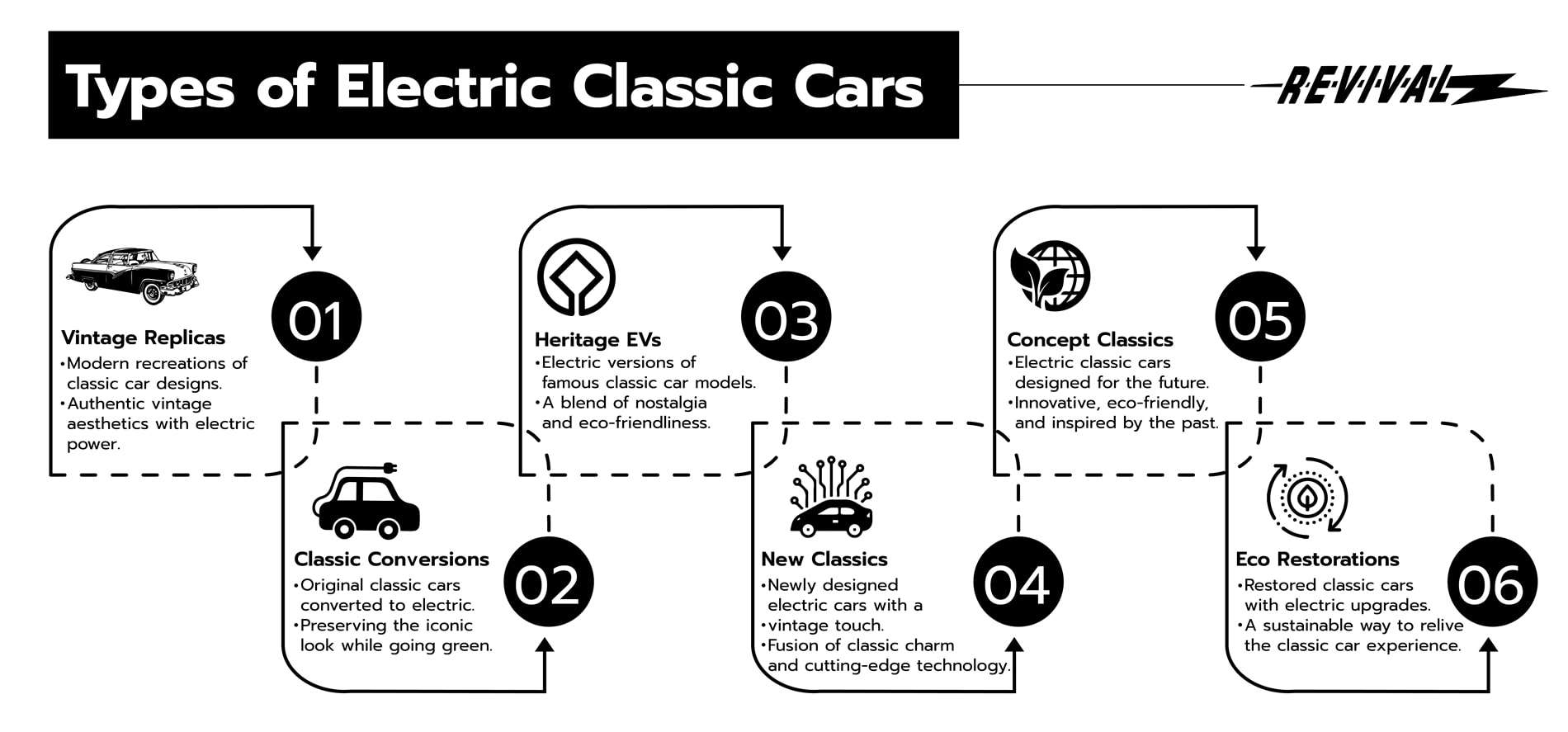
- Vintage Replicas:
- Modern recreations of classic car designs.
- Authentic vintage aesthetics with electric power.
- Classic Conversions:
- Original classic cars converted to electric.
- Preserving the iconic look while going green.
- Heritage EVs:
- Electric versions of famous classic car models.
- A blend of nostalgia and eco-friendliness.
- New Classics:
- Newly designed electric cars with a vintage touch.
- Fusion of classic charm and cutting-edge technology.
- Concept Classics:
- Electric classic cars designed for the future.
- Innovative, eco-friendly, and inspired by the past.
- Eco Restorations:
- Restored classic cars with electric upgrades.
- A sustainable way to relive the classic car experience.
Advantages of Electric classic cars
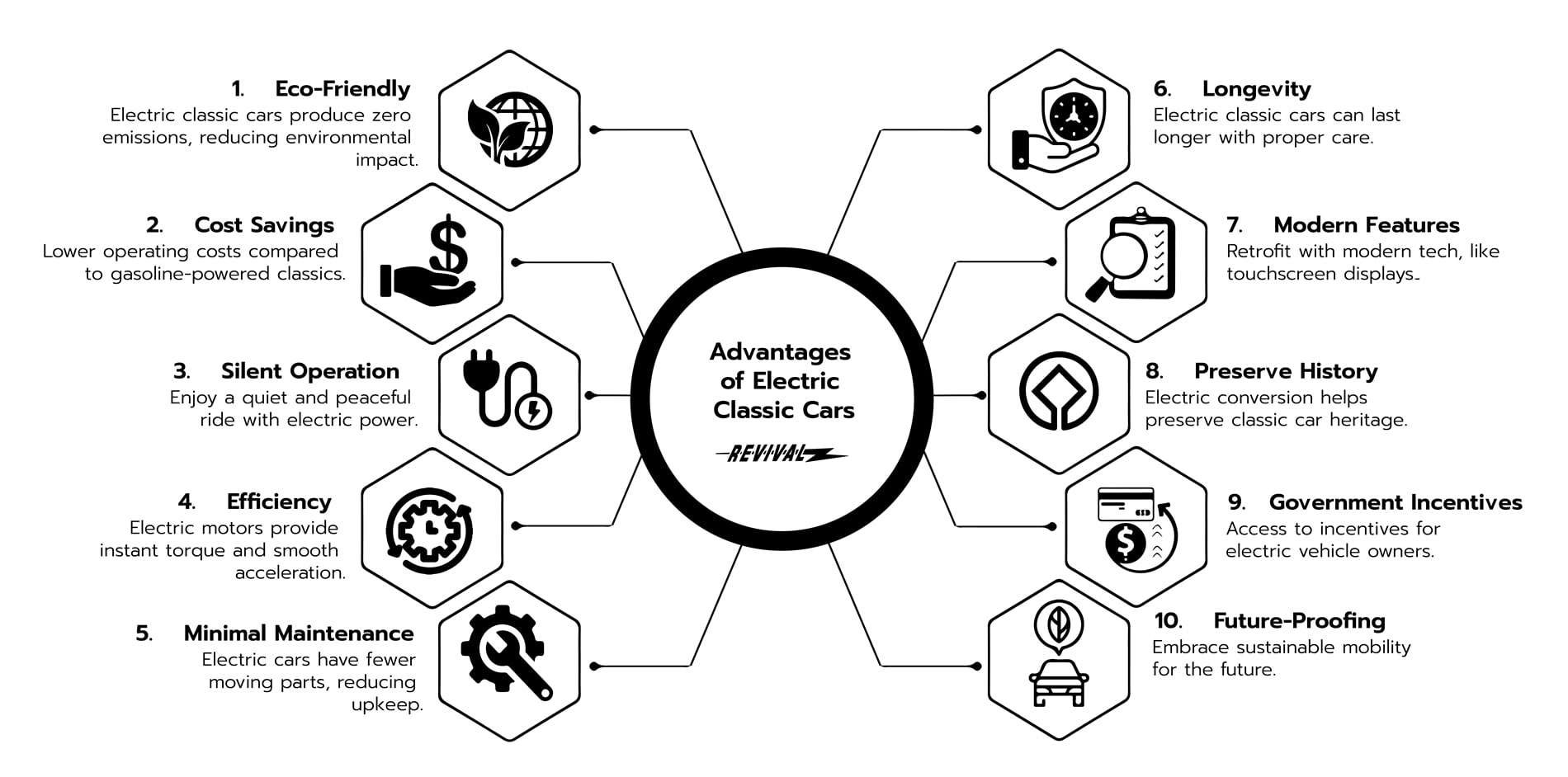
- Eco-Friendly: Electric classic cars produce zero emissions, reducing environmental impact.
- Cost Savings: Lower operating costs compared to gasoline-powered classics.
- Silent Operation: Enjoy a quiet and peaceful ride with electric power.
- Efficiency: Electric motors provide instant torque and smooth acceleration.
- Minimal Maintenance: Electric cars have fewer moving parts, reducing upkeep.
- Longevity: Electric classic cars can last longer with proper care.
- Modern Features: Retrofit with modern tech, like touchscreen displays.
- Preserve History: Electric conversion helps preserve classic car heritage.
- Government Incentives: Access to incentives for electric vehicle owners.
- Future-Proofing: Embrace sustainable mobility for the future.
Benefits and Challenges

Electric classic cars offer a unique combination of vintage charm and modern sustainability. In this chapter, we’ll explore the array of benefits and advantages these vehicles bring to the table.
Environmental Benefits
One of the most compelling reasons to embrace electric classic cars is their significant environmental impact.
Zero Emissions
Electric classic cars are zero-emission vehicles. We can convert classic cars from gasoline to electric power. This how we can eliminate tailpipe emissions entirely. There should be decrease in carbon dioxide , nitrogen oxides and particulate matter. This plays pivotal role in enhancing air quality and mitigating our carbon footprint.
Reduced Dependence on Fossil Fuels
Unlike their gasoline counterparts, electric classic cars are not reliant on fossil fuels. They derive their energy from electricity. This is a resource that can be harnessed from sustainable sources such as solar or wind power. This transition away from fossil fuels seamlessly aligns with our worldwide endeavors. It will also help to diminish our reliance on nonrenewable resources.
Quieter, Cleaner Streets
Electric classic cars operate quietly, reducing noise pollution in our cities and communities. The absence of engine noise enhances the overall urban environment, making our streets cleaner and more peaceful.
Cost-Efficiency and Financial Advantages
Beyond their environmental benefits, electric classic cars also offer several financial advantages.
Lower Operating Costs
Electric vehicles, as a general rule, boast lower operational expenses in comparison to their gasoline-powered counterparts. This efficiency stems from electric motors, which have fewer moving components and demand less maintenance. This translates to savings on routine servicing and repairs.
Energy Efficiency
Electric classic cars are highly energy-efficient. Electric motors deliver power directly to the wheels, resulting in less energy waste through heat and friction. This efficiency translates to more miles traveled per unit of energy consumed, reducing overall fuel costs.
Potential Incentives
In a lot of regions, government incentives are available to promote adoption of electric vehicles. Electric classic cars are also fall under those incentives . These incentives may include tax credits, rebates or reduced registration fees. This help us making ownership even more cost effective.
Impressive Performance and Efficiency
Electric classic cars are not just environmentally friendly; they also offer exceptional performance.
Instant Torque
Electric motors provide instant torque, resulting in rapid acceleration and a smooth, responsive driving experience. This immediate power delivery adds a thrill factor to driving electric classic cars.
Energy Recovery
Regenerative braking systems in electric classic cars capture and store energy when the brakes are applied. This energy recovery not only enhances efficiency but also extends the vehicle’s range.
Reduced Weight
Electric powertrains are generally lighter than traditional internal combustion engines. This reduction in weight can lead to improved handling and agility, enhancing the overall driving experience.
Maintenance Benefits
Electric classic cars require less maintenance than their gasoline counterparts.
Fewer Moving Parts
Electric motors have fewer moving parts than internal combustion engines. This means fewer components that can wear out or break, resulting in reduced maintenance costs over the vehicle’s lifespan.
Reduced Fluid Changes
Electric classic cars do not require frequent oil changes or transmission fluid replacements, further lowering maintenance expenses.
Longer Lifespan
Electric motors are known for their durability and longevity. With proper care, the electric components of a classic car conversion can last for many years. This ensures a lasting investment.
Challenges of Electric classic cars
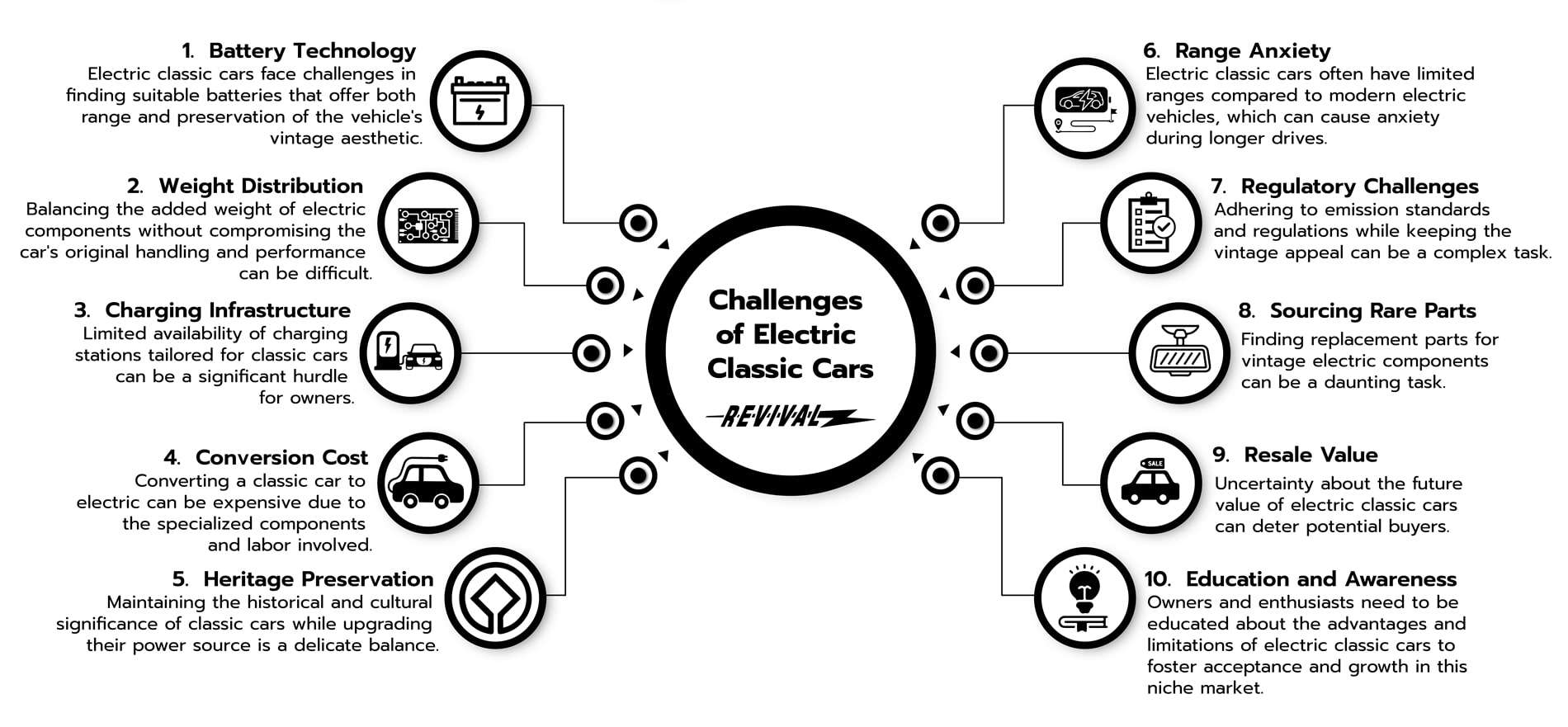
- Battery Technology: Electric classic cars face challenges in finding suitable batteries that offer both range and preservation of the vehicle’s vintage aesthetic.
- Weight Distribution: Balancing the added weight of electric components without compromising the car’s original handling and performance can be difficult.
- Charging Infrastructure: Limited availability of charging stations tailored for classic cars can be a significant hurdle for owners.
- Conversion Cost: Converting a classic car to electric can be expensive due to the specialized components and labor involved.
- Heritage Preservation: Maintaining the historical and cultural significance of classic cars while upgrading their power source is a delicate balance.
- Range Anxiety: Electric classic cars often have limited ranges compared to modern electric vehicles, which can cause anxiety during longer drives.
- Regulatory Challenges: Adhering to emission standards and regulations while keeping the vintage appeal can be a complex task.
- Sourcing Rare Parts: Finding replacement parts for vintage electric components can be a daunting task.
- Resale Value: Uncertainty about the future value of electric classic cars can deter potential buyers.
- Education and Awareness: Owners and enthusiasts need to be educated about the advantages and limitations of electric classic cars to foster acceptance and growth in this niche market.
Disadvantages and Challenges
At Revival Autos, we’re committed to bringing the magic of electric classic cars to life. However, it’s essential to acknowledge the challenges and disadvantages that come with this innovative endeavor. In this chapter, we’ll explore the obstacles and considerations that classic car enthusiasts may encounter when embracing electric classics.
Range Limitations and Charging Infrastructure
Range Limitations
One of the primary challenges associated with electric classic cars is their range limitations. Vintage cars retrofitted with electric powertrains often have smaller battery capacities compared to modern electric vehicles. As a result their driving range on single charge can be limited.
Charging Infrastructure
The availability of charging infrastructure can also be major concern. While electric vehicle charging networks are growing, they may not be as widespread or accessible as gasoline refueling stations, especially in rural areas. This limitation can affect the convenience and practicality of owning an electric classic car.
Battery Degradation and Longevity
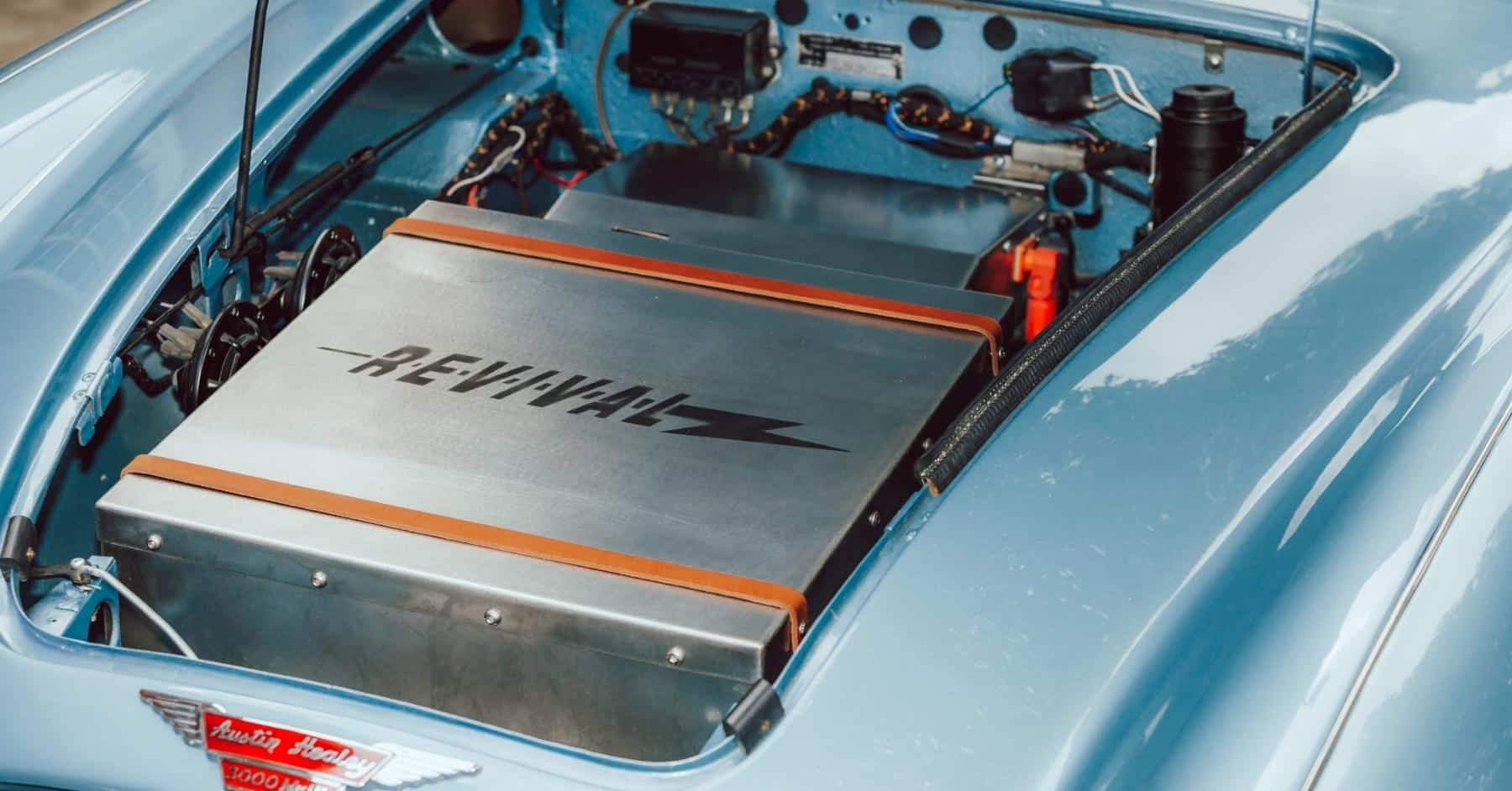
Battery Degradation
Over time, all batteries experience degradation, including the lithium-ion batteries commonly used in electric classic car conversions. Factors such as temperature, usage patterns, and charging habits can affect the rate of degradation. Classic car enthusiasts need to be aware that batteries may lose capacity over the years.
Longevity
The longevity of the battery pack is another consideration. While electric classic car conversions can provide many years of reliable service, the eventual need to replace the battery pack should be factored into the cost of ownership.
Technical and Conversion Challenges
Finding Suitable Components
Selecting appropriate components for the conversion can be challenging. Classic cars come in various makes and models, each with unique specifications. Ensuring that the electric powertrain components are compatible with the classic car’s design and structure requires careful consideration.
Preserving Aesthetics
One of the key challenges in electric classic car conversions is preserving the aesthetics and original charm of the vintage vehicle. Enthusiasts and restorers strive to maintain the classic car’s appearance while seamlessly integrating modern electric components, which can be a technically demanding task.
Skill and Expertise
Successful electric classic car conversions require a high level of skill and expertise. The process involves intricate electrical work, mechanical adjustments, and a deep understanding of both classic car mechanics and modern electric systems. Ensuring that the conversion is safe and reliable is paramount.
Benefits and potential challenges of having an Electric Classic Car
Benefits | Challenges |
– Zero emissions for a cleaner environment | – Limited driving range, especially in older conversions |
– Reduced carbon footprint and air pollution | – Dependence on available charging infrastructure |
– Quieter operation, minimizing noise pollution | – Potential battery degradation over time |
– Lower operating costs due to reduced maintenance | – Technical challenges in component compatibility |
– Energy cost savings compared to gasoline counterparts | – Preservation of classic aesthetics during conversion |
– Potential government incentives and tax benefits | – Finding suitable components for conversions |
– Instant torque delivery for quick acceleration | – Expertise and skill required for successful conversions |
– Smooth and responsive driving experience | – Balancing modern amenities with vintage aesthetics |
– Potential for enhanced performance through upgrades | – Limited availability of fast-charging solutions |
– Fewer moving parts, reducing the need for maintenance | – Potential range anxiety for long trips |
– Longer lifespan for electric drivetrain components | – Maintaining the historical integrity of classic cars |
This table provides a quick overview of the benefits and challenges associated with electric classic cars, helping enthusiasts and potential buyers weigh the pros and cons of conversion.
The Conversion Process

How to Convert a Classic Car to Electric Power
Converting a classic car to electric power is a complex yet rewarding process that requires careful planning and execution. At Revival Autos, we take pride in helping classic car enthusiasts embark on this transformation journey. In this chapter, we’ll provide an in-depth guide to the conversion process, from vehicle selection to the final testing phase.
1. Vehicle Selection
Selecting the right classic car for conversion is the first crucial step. Factors to consider include the vehicle’s weight, available space for batteries, and its structural condition. Some classic cars may be more suitable for conversion due to their design and compatibility with electric powertrains.
2. Safety Assessment
Safety is paramount during the conversion process. Before starting any modifications, a comprehensive safety assessment should be conducted. This includes a thorough evaluation of the classic car’s frame, suspension, and brakes. Upgrading these components may be necessary to ensure the vehicle can safely handle the added weight of the electric powertrain.
3. Engine Removal
The process begins with the removal of the internal combustion engine, transmission, and associated components. This step clears space within the engine bay for the electric motor and batteries. It’s essential to document and store the removed components properly in case the classic car needs to be returned to its original state in the future.
4. Electric Motor Installation
With the engine removed, the electric motor can be installed. The type of motor selected depends on various factors, including the desired performance characteristics and available space. It is typically mounted in the same location as the original engine, ensuring a seamless fit.
5. Battery Placement
Careful consideration is given to the placement of the battery pack. The goal is to distribute the weight evenly to maintain the classic car’s balance and handling. Battery placement options include the trunk, under the hood, or even along the chassis. The choice depends on the specific classic car model and the design preferences of the owner.
6. Charging System Integration
Select and integrate an appropriate charging system. The choice of charging system depends on the owner’s charging needs and infrastructure. Options include standard home chargers or high-speed chargers for quicker refueling.
7. Electrical Wiring
A meticulous approach to electrical wiring is crucial to ensure the reliability and safety of the conversion. All electrical connections should be secure, and the entire system should be properly grounded. Safety features like disconnect switches should also be included.
8. Testing and Tuning
Thoroughly test the converted classic car and fine-tune the system for optimal performance. This includes adjustments to torque, acceleration, and braking. Any issues that arise during testing should be addressed promptly to ensure the vehicle operates smoothly and safely.
9. Regulatory Compliance
Ensure that the conversion complies with local regulations and safety standards. This may involve inspections and obtaining certifications to ensure the converted classic car meets all legal requirements.
Key Components and Model Types for Conversion
Key Components
A successful conversion relies on several key components:
- Electric Motor: The choice of an electric motor should align with the desired performance and power requirements of the classic car.
- Batteries: Select high-quality lithium-ion batteries with sufficient capacity to provide the desired range and power.
- Motor Controller: The motor controller manages the flow of electricity from the batteries to the motor, allowing for precise control of speed and torque.
- Charging System: Integrate a charging system that suits the owner’s charging needs and infrastructure.
Model Types for Conversion
Different classic car models may present unique challenges and opportunities during the conversion process:
- Sedans and Coupes: These classic car body styles often provide ample space for battery placement and straightforward conversion processes.
- Sports Cars: Sports cars may require special attention to weight distribution to maintain their distinctive handling characteristics.
- Convertibles: Preserving the open-top experience while adding electric power can be a unique challenge, often requiring innovative solutions.
Elements of a Successful Conversion
A successful conversion is more than just the sum of its parts; it’s a holistic process that combines technical expertise and a deep appreciation for classic cars. Key elements include:
- Seamless Integration: The electric components should seamlessly blend with the classic car’s aesthetics, preserving its original charm.
- Safety First: Prioritize safety features and structural enhancements to ensure the converted classic car is reliable and secure.
- Performance Optimization: Fine-tune the electric powertrain to deliver a satisfying and responsive driving experience that meets the owner’s expectations.
- Sustainability: Embrace the sustainability goals of the conversion, contributing to reduced emissions and environmental impact.
At Revival Autos, we excel in creating electric classic cars that capture the essence of the past while embracing a sustainable future.
The expenses associated with converting a car to electric power exhibit significant variability, contingent upon multiple factors. The conversion process entails replacing the conventional internal combustion engine with an electric motor, incorporating a battery pack, and implementing various adaptations to accommodate the electric drivetrain. Below, we delve into the pivotal factors that exert influence over the cost of such a conversion:
- Vehicle Type: The make and model of your car influence conversion costs; smaller and lighter vehicles are generally more budget-friendly to convert.
- Battery Pack: The battery pack is a major expense; lithium-ion batteries, common in EVs, can be costly, with size and capacity also affecting the price.
- Electric Motor: Motor type and size vary in price; high-performance or specialized motors may come at a premium.
- Range Requirements: Longer range demands a larger, pricier battery, while shorter ranges can use smaller, more economical ones.
- Charging Infrastructure: If necessary, consider the cost of installing a charging station at home or work.
- Labor and Expertise: Skilled technicians in EV conversions may come at a higher price, impacting overall costs.
- Upgrades and Modifications: Vehicle-specific upgrades, like suspension or cooling system changes, may be needed, adding expenses.
- Safety Features: Safety components like emergency disconnects contribute to costs.
- Modern Amenities: Integrating modern features adds to expenses, including touchscreen infotainment or safety tech.
- Regulatory and Certification: Meeting safety and emissions standards may incur additional regulatory and certification costs.
- DIY vs. Professional: DIY conversions save on labor but are challenging; professional conversions ensure reliability but are costlier.
- Component Quality: Component quality, like the motor or battery, affects overall cost and performance.
Providing an exact cost for an electric car conversion can be challenging due to various factors. However, you can expect costs to start at around $5,000 for a basic DIY conversion. But this conversion will be with used or modest quality components. Conversely professional conversion with high quality components and modifications can cost upto $20,000 to $30,00. It is crucial to budget according to your specific project’s requirements and goals.
Electric Car Conversion Kit
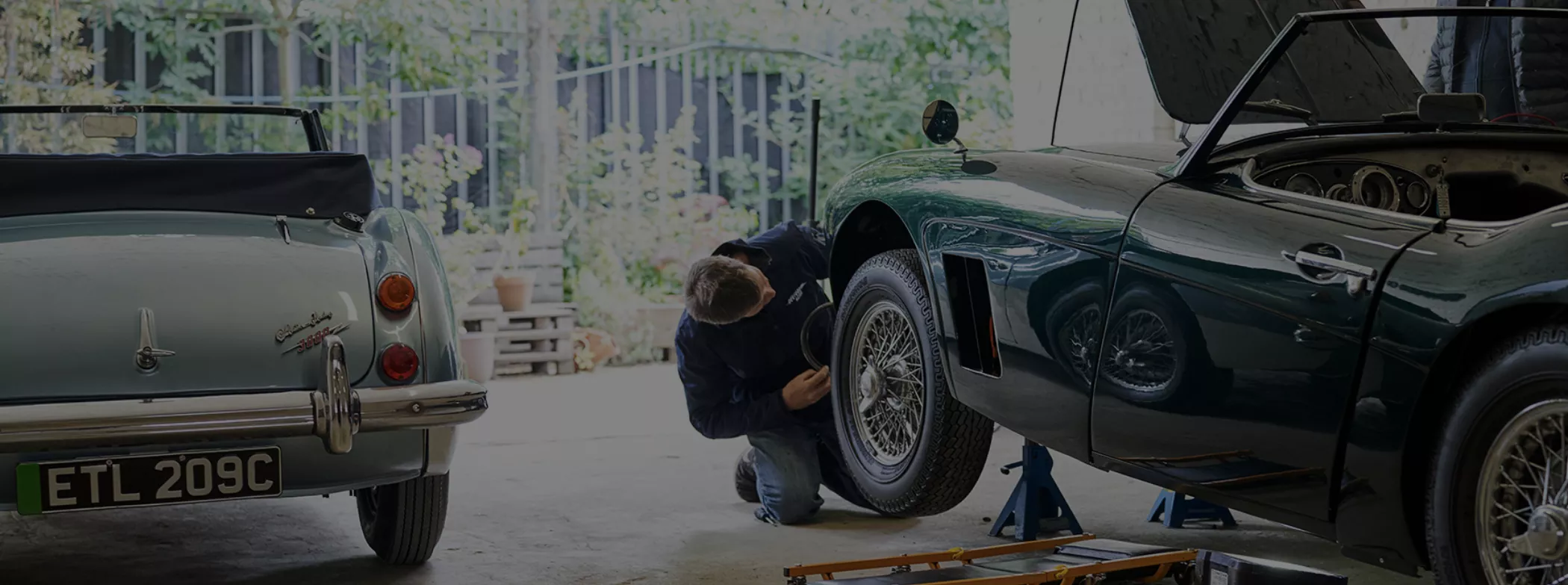
Conversion kits encompass extensive assortments of components, parts, and guidelines meticulously crafted to metamorphose a conventional vehicle. This is usually equipped with an internal combustion engine (ICE) that convert it into a dynamic electric vehicle. These kits empower both individuals and workshops to embark on the electrifying journey of vehicle conversion. This is how it facilitates transition from traditional gasoline or diesel propulsion to the realm of electrifying power.
Here’s an overview of what conversion kits typically include and how they work:
Components of Conversion Kits
- Electric Motor: Conversion kits incorporate an electric motor as the new source of propulsion for the vehicle. These motors exhibit varying sizes and power outputs, tailored to suit diverse vehicle types and performance requirements.
- Battery Pack: Included within the kits are battery packs or sets of batteries, designed to store and supply electrical energy to drive the electric motor. These battery packs come in differing capacities and chemistries, influencing the vehicle’s range and performance.
- Controller: An integral electronic controller assumes responsibility for orchestrating the flow of electricity from the battery to the motor, governing both motor speed and power output.
- Charging Components: Kits may encompass charging equipment, such as onboard chargers or external power source connectors. These components facilitate the recharging of the vehicle’s batteries.
- Adapters and Mounts: Integral to the kit are a range of adapters and mounts. These components facilitate the seamless installation of the electric motor, battery pack, and controller within the existing engine bay of the vehicle.
- Wiring and Cables: Conversion kits are thoughtfully equipped with all essential wiring, cables, and connectors required for secure and reliable interconnection of components.
- Cooling Systems: Recognizing that electric motors and batteries generate heat during operation, kits often feature cooling systems, which may include radiators or fans, to sustain optimal operating temperatures.
- Accessories: Supplementary components like throttle controllers, regenerative braking systems, instrumentation, or display panels may be incorporated within some kits. These elements enable the monitoring of vehicle performance and battery status.
How Conversion Kits Work
- Remove the Internal Combustion Engine (ICE): The first step in an electric vehicle conversion is to remove existing ICE. Also related components such as the fuel tank and exhaust system are removed from the vehicle.
- Install Electric Components: After the ICE is removed. Other components are installed. For example: electric motor, battery pack, controller and associated components are installed in the vehicle’s engine bay.
- Connect and Wire: Wiring and connections are made to link all the components. It ensures proper communication and power flow.
- Cooling and Safety: Cooling systems are added to manage temperatures. Safety features like emergency disconnects are installed to ensure safe operation.
- Testing and Optimization: After installation, vehicle is thoroughly tested and optimized to make sure all systems work correctly and efficiently.
- Charging Infrastructure: If not included in the kit vehicle owner may need to set up a charging infrastructure to recharge the electric vehicle.
Conversion kits offer a cost-effective way for enthusiasts, DIYers, or shops to convert existing vehicles into electric vehicles. However, it’s essential to select a kit that matches the vehicle’s make and model and consider factors like range, performance, and regulatory compliance when undertaking an EV conversion project.
High Performance Electric Car Conversion Kit.
A high-performance electric car conversion kit is a specialized package of components and technology. This is designed to transform a traditional gasoline powered car into an electric vehicle with but exceptional power. For example increased speed, and acceleration. These conversion kits are ideal for enthusiasts who desire a thrilling driving experience. It also reduces their carbon footprint. Here are some key features and components typically associated with high-performance electric car conversion kits:
- High-Power Electric Motor: Top-tier conversion kits are equipped with a potent electric motor renowned for its exceptional torque and acceleration capabilities. These motors excel in delivering exhilarating performance, often surpassing the capabilities of the original gasoline engine.
- High-Capacity Battery Pack: These kits feature an ample high-capacity battery pack designed to meet the elevated power requirements. These batteries possess the capability to store a substantial amount of energy, facilitating extended driving ranges and rapid acceleration.
- Performance Controller: A performance-centric controller assumes a pivotal role in managing the electric motor’s power output, ensuring precise control over acceleration and speed. These controllers often offer programmability for fine-tuning the vehicle’s performance characteristics.
- Advanced Cooling Systems: High-performance conversions demand efficient cooling systems to effectively manage the heat generated by the electric motor and battery pack during intense driving. This may encompass liquid cooling or advanced air cooling solutions.
- Enhanced Suspension and Handling: Certain kits may incorporate enhanced suspension components and chassis adjustments to elevate the vehicle’s handling, stability, and cornering capabilities.
- Performance Tires and Wheels: The package may encompass high-performance tires and wheels meticulously designed to optimize traction and road grip, effectively harnessing the increased power.
- Regenerative Braking: Many top-tier conversion kits integrate regenerative braking systems that capture and convert energy during braking, providing additional power and extending the vehicle’s range.
- Optimized Gear Ratios: Gear ratio adjustments may be undertaken to maximize the electric motor’s efficiency and power delivery, enhancing overall performance.
- Customized Tuning: These kits offer the flexibility of tailored tuning to align with the driver’s preferences, allowing adjustments in power delivery, acceleration, and overall performance.
- Safety Features: Safety remains paramount in high-performance conversions, featuring elements such as emergency disconnects and advanced braking systems to ensure secure operation.
- Performance Monitoring: Kits may include instrumentation and displays that empower drivers to monitor critical performance metrics, encompassing power output, battery status, and efficiency.
It’s crucial to emphasize that the price of high-performance electric car conversion kits exhibits significant variability, contingent upon factors such as the vehicle’s make and model, the specific components encompassed, and the extent of desired customization. These kits may span from around $15,000 to $40,000 or even higher, exclusive of installation expenses. Moreover, for optimal performance and safety, it’s advisable to enlist the services of skilled technicians for professional installation.
Electric classic cars vs. Gasoline Counterparts
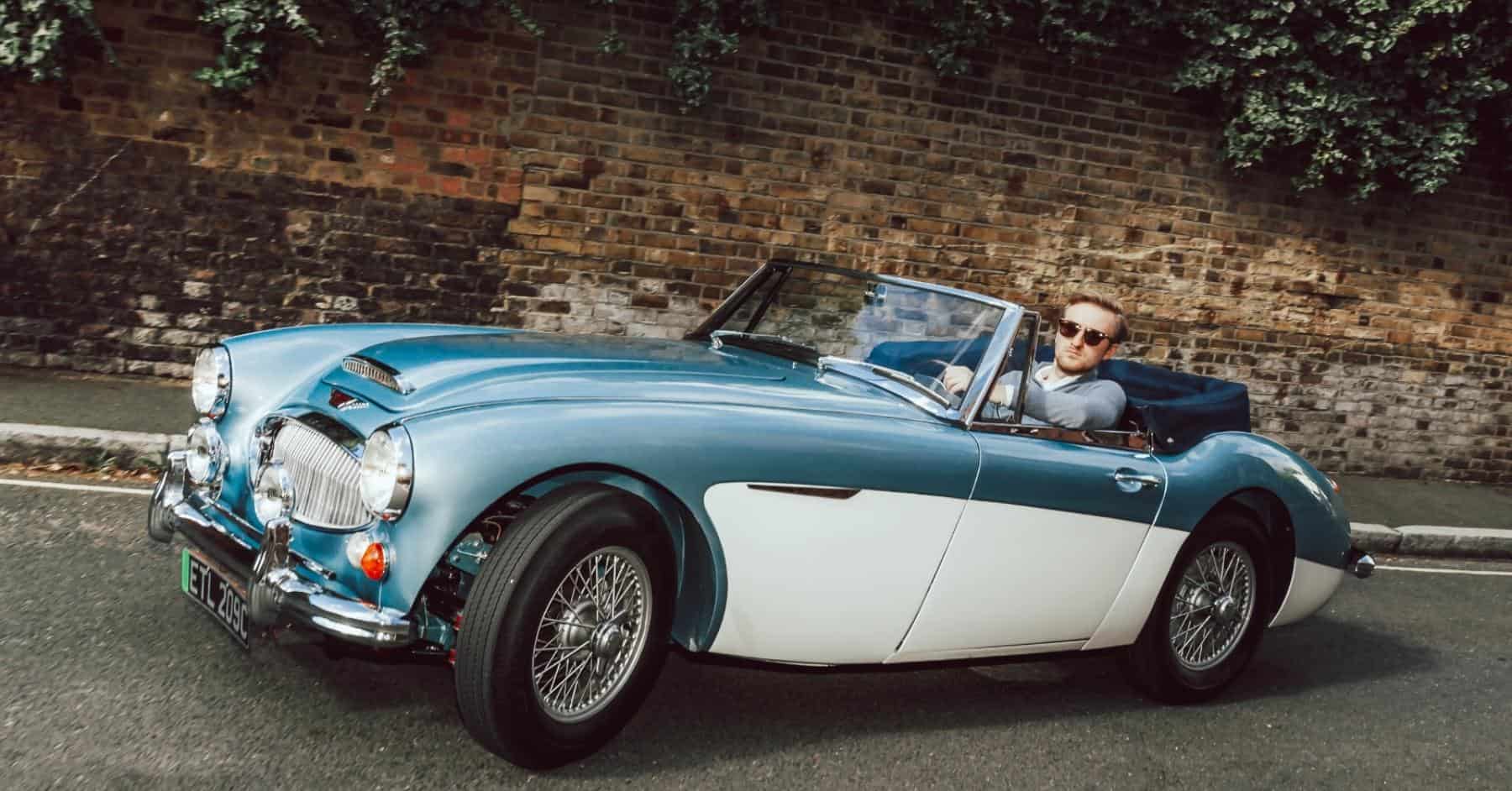
In the world of classic cars, a fascinating shift is taking place. Electric classic cars are emerging as contenders to their traditional gasoline-powered counterparts. In this chapter, we’ll conduct a comparative analysis to explore the differences, advantages, and considerations of electric classic cars in contrast to their gasoline counterparts.
Environmental Impact
Electric classic cars
- Zero Emissions: Electric classic cars produce zero tailpipe emissions, contributing to improved air quality and reduced greenhouse gas emissions.
- Reduced Carbon Footprint: They rely on electricity, which can be generated from renewable sources, further decreasing their environmental impact.
- Lower Noise Pollution: Electric motors operate quietly, reducing noise pollution in urban areas.
Gasoline Counterparts
- Emissions: Traditional classics emit pollutants like CO2, NOx, and particulate matter, contributing to air pollution and climate change.
- Fossil Fuels: Gasoline classics depend on fossil fuels, perpetuating the use of non-renewable resources.
- Noise: Traditional engines are noisier, potentially impacting the urban soundscape.
Cost-Efficiency
Electric classic cars
- Lower Operating Costs: Electric classic cars have fewer moving parts, resulting in reduced maintenance expenses.
- Energy Efficiency: They are highly energy-efficient, translating to more miles traveled per unit of energy consumed.
- Potential Incentives: In some regions, incentives may be available to promote electric vehicle adoption, reducing ownership costs.
Gasoline Counterparts
- Higher Maintenance Costs: Traditional classics often require more frequent maintenance due to complex internal combustion engines.
- Fuel Costs: Gasoline classics incur ongoing fuel costs.
- Limited Incentives: There are typically fewer financial incentives for owning gasoline-powered vehicles.
Performance and Driving Experience
Electric classic cars
- Instant Torque: Electric motors deliver instant torque, resulting in quick acceleration and a responsive driving experience.
- Smooth Operation: They offer a quieter and smoother driving experience with minimal vibration.
- Regenerative Braking: Regenerative braking systems capture energy during braking, enhancing efficiency.
Gasoline Counterparts
- Varied Performance: Performance varies among gasoline classics, with factors like engine size and tuning playing a significant role.
- Engine Noise: Traditional engines produce engine noise, which some enthusiasts appreciate.
- Standard Braking: Conventional braking systems do not recover energy.
Maintenance and Longevity
Electric classic cars
- Fewer Moving Parts: Electric motors have fewer moving parts, reducing the risk of component failure.
- Reduced Fluid Changes: They do not require frequent oil changes or transmission fluid replacements.
- Longevity: Electric components can have a longer lifespan than traditional engine components.
Gasoline Counterparts
- Complexity: Traditional engines have more moving parts, increasing the potential for maintenance issues.
- Regular Servicing: Gasoline classics require periodic oil changes, tune-ups, and maintenance.
- Engine Wear: Internal combustion engines may experience wear and tear over time.
Sustainability and Heritage Preservation
Electric classic cars
- Sustainable Legacy: Converting classic cars to electric power contributes to a sustainable automotive legacy.
- Heritage Preservation: Electric conversions allow vintage car enthusiasts to keep their cherished classics on the road, preserving automotive heritage.
Gasoline Counterparts
- Historical Value: Gasoline classics are valued for their historical significance and originality.
- Environmental Impact: They have a larger environmental footprint due to emissions and fossil fuel usage.
Electric classic cars and gasoline classics each have their unique characteristics, advantages, and considerations. The shift toward electric classic cars represents a progressive move towards sustainability without compromising on the timeless charm of classic automobiles. As technology advances, electric classic cars continue to gain prominence, offering classic car enthusiasts a greener and more eco-conscious way to enjoy the past while embracing the technology of the future. See Table below:
Comparison table highlighting the key differences between electric classic cars and their gasoline counterparts:
Aspect | Electric classic cars | Gasoline Classic Cars |
Environmental Impact | – Zero tailpipe emissions. | – Emissions contribute to air pollution. |
| – Reduced carbon footprint with | – Dependence on fossil fuels. |
| potential for renewable energy use. | – Emissions include CO2, NOx, and more. |
Cost-Efficiency | – Lower operating costs due to fewer | – Higher maintenance costs with |
| moving parts. | more frequent servicing. |
| – Energy-efficient, lower fuel costs. | – Ongoing fuel expenses. |
| – Potential incentives and tax benefits. | – Fewer financial incentives. |
Performance & Experience | – Instant torque for quick acceleration. | – Varied performance depending on engine. |
| – Smooth, quiet operation with minimal | – Engine noise and vibration. |
| vibration. | – Standard braking system. |
Maintenance & Longevity | – Fewer moving parts, reducing risk of | – More moving parts, increasing potential |
| component failure. | for maintenance issues. |
| – Reduced fluid changes (no oil, | – Regular oil changes, tune-ups, and |
| transmission fluid). | maintenance required. |
| – Longer lifespan for electric | – Internal combustion engines may wear |
| components. | and tear over time. |
Sustainability & Heritage Preservation | – Contributes to sustainable legacy. | – Valued for historical significance. |
– Preserves automotive heritage. | – Environmental footprint due to emissions. | |
Range & Charging | – Limited range per charge. | – Longer range with a full tank of fuel. |
| – Requires charging infrastructure. | – Widespread availability of gasoline. |
Refueling & Convenience | – Charging time varies (standard home charger or fast charger options). | – Quick refueling at gasoline stations. |
| – Established refueling infrastructure. | |
| – Home charging may require installation | – Convenient access to gasoline. |
Resale Value | – Growing interest, potential for appreciation as technology advances. | – Established collector market. |
| – Historical value and originality. | |
Conversion Costs | – Initial conversion cost can be | – Varies depending on the condition of |
| significant but decreasing. | the classic car and desired upgrades. |
Driving Sound | – Quiet operation with minimal noise. | – Engine noise and exhaust notes. |
Regulatory Compliance | – Subject to local EV regulations. | – Compliance with classic car regulations. |
Ownership Experience | – Modern amenities (infotainment, climate control, safety features). | – Classic driving experience with original features and mechanical systems. |
Future Potential | – Advancing technology and expanding market for electric classics. | – Preservation of originality and historical value. |
Please note that the specifics of each comparison may vary depending on the make and model of the classic cars and the nature of the electric conversion. This table provides a general overview of the key distinctions between the two types of classic cars.
Best Practices and Strategies
Tips for successful electric classic car conversion
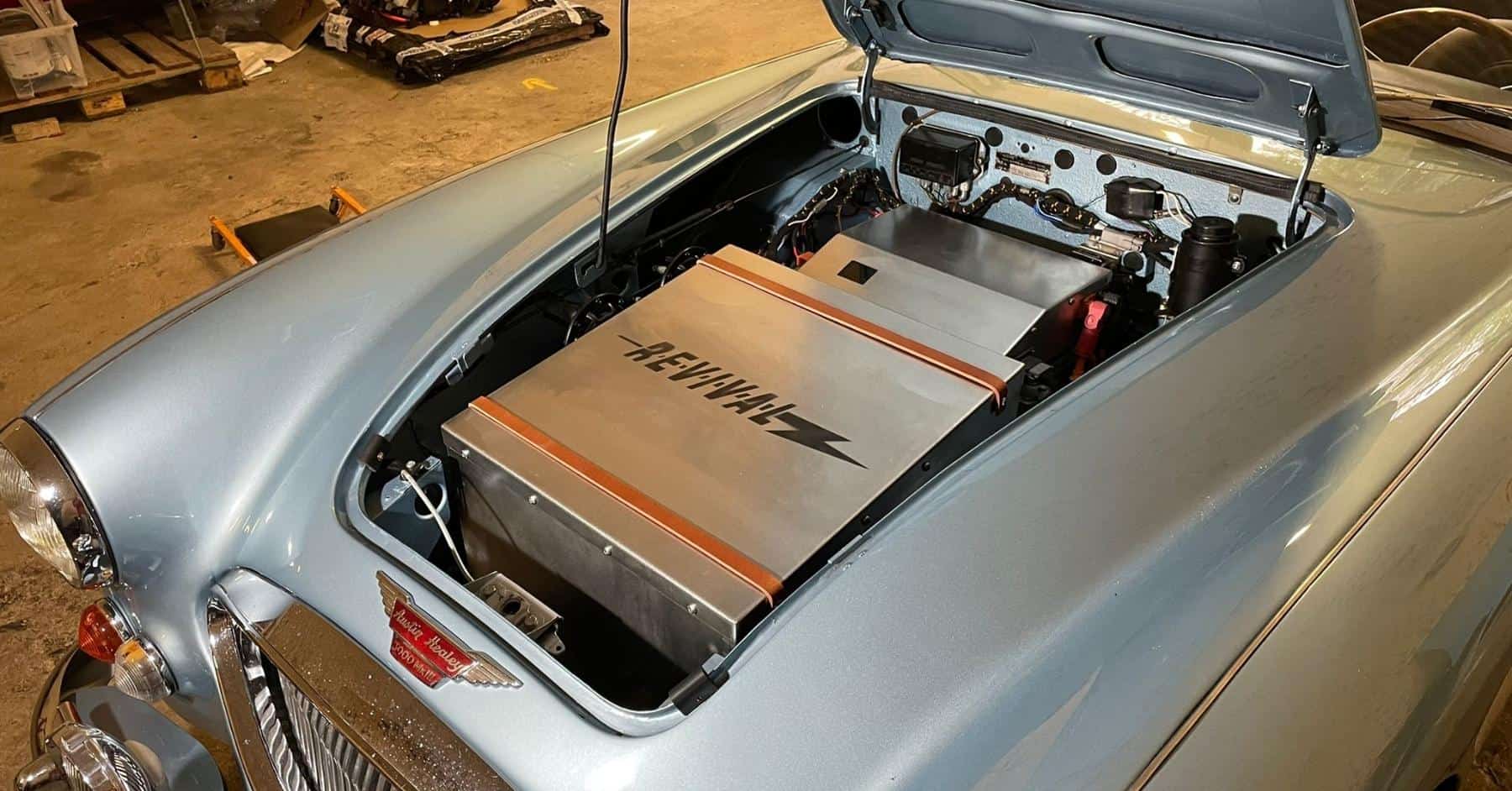
Converting a classic car to electric power is a scrupulous process. It requires careful planning and execution. To ensure successful conversion, we have compiled full set of best practices and tips that can guide you through the journey:
1. Thorough Research
- Conduct extensive research on electric classic car conversions.
- Explore available conversion kits and components.
- Join online forums or communities to connect with experienced enthusiasts.
2. Select the Right Vehicle
- Choose a classic car that aligns with your conversion goals.
- Assess the vehicle’s structural condition and compatibility for electric conversion.
3. Safety First
- Prioritize safety during the conversion process.
- Ensure structural enhancements to handle the additional weight of electric components.
4. Professional Expertise
- Seek the assistance of experienced professionals or conversion specialists.
- Their expertise can help overcome technical challenges and ensure a high-quality conversion.
5. Quality Components
- Invest in high-quality electric components, including the motor, batteries, and controller.
- Quality components contribute to a reliable and efficient conversion.
6. Battery Placement
- Carefully plan the placement of batteries for balanced weight distribution.
- Consider utilizing space in the trunk, under the hood, or along the chassis.
7. Charging Infrastructure
- Assess your charging needs and install a suitable charging system.
- Ensure compatibility with your electric classic car.
8. Electrical Wiring
- Pay meticulous attention to electrical wiring to guarantee safe and reliable operation.
- Ground the system properly and include safety features like disconnect switches.
9. Testing and Fine-Tuning
- Thoroughly test the converted classic car.
- Fine-tune the system for optimal performance, addressing any issues that arise.
10. Regulatory Compliance
- Familiarize yourself with local regulations and safety standards.
- Complete any required inspections or certifications.
Maintenance and Repair of Electric classic cars
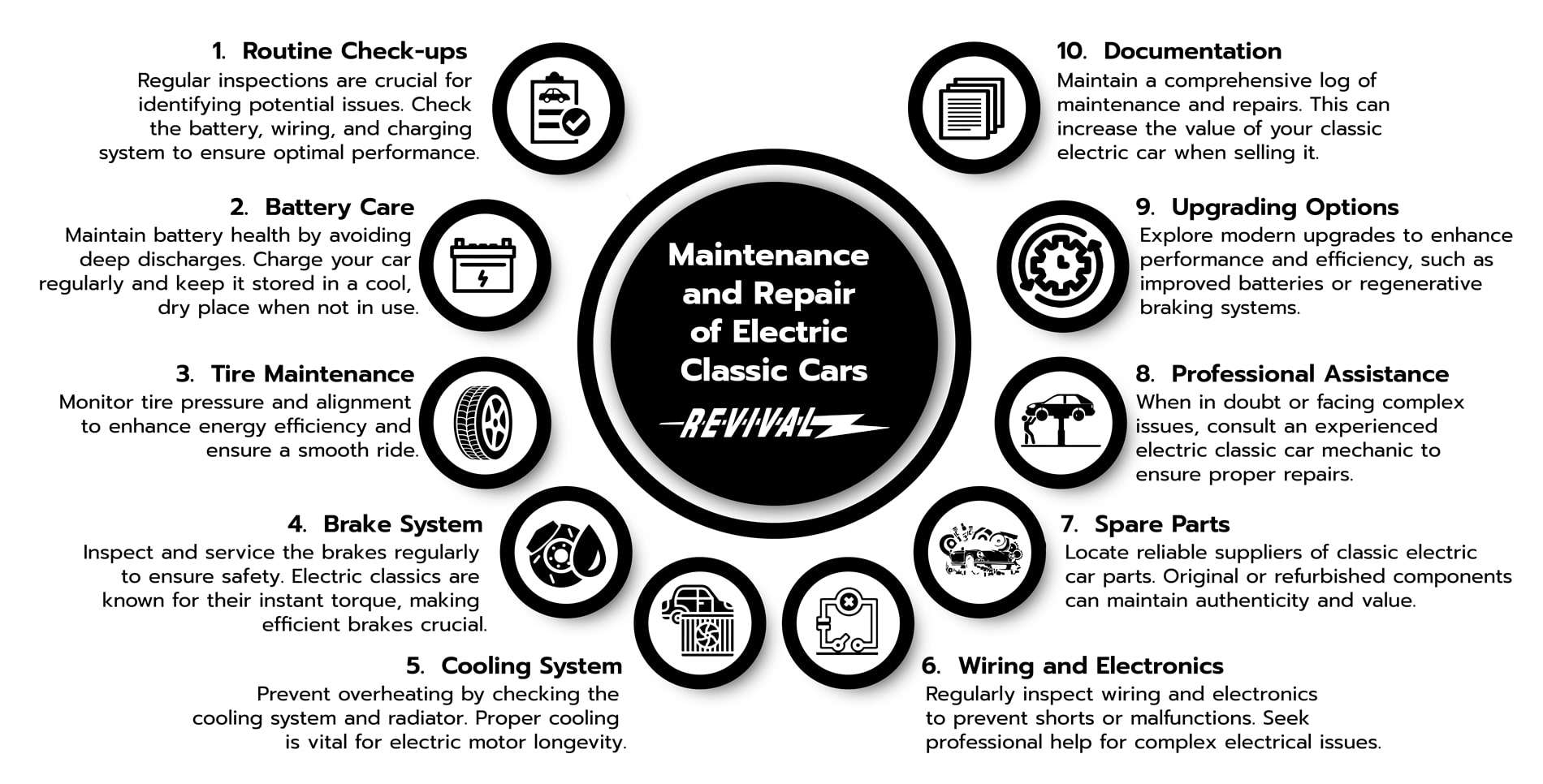
- Routine Check-ups: Regular inspections are crucial for identifying potential issues. Check the battery, wiring, and charging system to ensure optimal performance.
- Battery Care: Maintain battery health by avoiding deep discharges. Charge your car regularly and keep it stored in a cool, dry place when not in use.
- Tire Maintenance: Monitor tire pressure and alignment to enhance energy efficiency and ensure a smooth ride.
- Brake System: Inspect and service the brakes regularly to ensure safety. Electric classics are known for their instant torque, making efficient brakes crucial.
- Cooling System: Prevent overheating by checking the cooling system and radiator. Proper cooling is vital for electric motor longevity.
- Wiring and Electronics: Regularly inspect wiring and electronics to prevent shorts or malfunctions. Seek professional help for complex electrical issues.
- Spare Parts: Locate reliable suppliers of classic electric car parts. Original or refurbished components can maintain authenticity and value.
- Professional Assistance: When in doubt or facing complex issues, consult an experienced electric classic car mechanic to ensure proper repairs.
- Upgrading Options: Explore modern upgrades to enhance performance and efficiency, such as improved batteries or regenerative braking systems.
- Documentation: Maintain a comprehensive log of maintenance and repairs. This can increase the value of your classic electric car when selling it.
Sustainable Ownership Strategies
Owning an electric classic car offers an opportunity to adopt sustainable practices and contribute to a greener future. Here are strategies to make your ownership experience more sustainable:
1. Eco-Friendly Charging
- Opt for renewable energy sources when charging your electric classic car.
- Consider installing solar panels at home to generate clean electricity.
2. Regular Maintenance
- Schedule regular maintenance checks to ensure the electric components are in top condition.
- Address any issues promptly to maintain efficiency.
3. Drive Responsibly
- Embrace eco-conscious driving habits, such as smooth acceleration and regenerative braking.
- Maximize the efficiency of your electric classic car.
4. Community Engagement
- Connect with local electric vehicle enthusiasts and share experiences.
- Promote sustainable practices and educate others about electric classic cars.
5. Environmental Stewardship
- Support environmental initiatives and organizations focused on sustainability.
- Use your electric classic car as a symbol of responsible transportation.
By following these best practices and adopting sustainable ownership strategies, you can maximize the benefits of your electric classic car while contributing to a cleaner and more eco-conscious automotive future.
Importance and Role
The Importance of Electric classic cars in Modern Eco-Conscious Times
In an era marked by growing environmental awareness and a shift towards sustainable living, electric classic cars play a significant role in redefining the automotive landscape. At Revival Autos, we recognize the importance of these remarkable vehicles in the context of modern eco-conscious times.
1. Reducing Environmental Impact
Electric classic cars hold the potential to significantly reduce the automotive industry’s environmental impact. By converting cherished classics into zero-emission electric vehicles (EVs), we can lower carbon emissions and mitigate air pollution, contributing to a greener planet.
2. Preserving Automotive Heritage
Preservation of automotive heritage is at the heart of what we do at Revival Autos. Electric classic cars allow enthusiasts to keep their beloved vintage vehicles on the road while aligning with contemporary eco-friendly ethos. These conversions represent a bridge between automotive history and a sustainable future.
3. Cultural Significance
Classic cars hold a special place in the hearts of enthusiasts worldwide. They embody nostalgia, craftsmanship, and a connection to bygone eras. Electric classic cars preserve this cultural significance while embracing cutting-edge technology and sustainable practices.
4. Inspiring Innovation
The pursuit of electric classic car conversions has spurred innovation in the automotive industry. It has led to advancements in electric powertrains, battery technology, and sustainable practices. This innovation extends beyond conversions, influencing the development of modern electric vehicles.
Preserving Automotive Heritage and Cultural Significance
Revival Autos is committed to preserving automotive heritage and cultural significance through the conversion of classic cars into electric classics. Our approach prioritizes:
– Maintaining Aesthetics
- We ensure that the charm and aesthetics of classic cars are preserved during the conversion process.
- The original look and feel of these vehicles remain intact, allowing owners to relish the nostalgia.
– Heritage Appreciation
- Electric classic cars provide a unique opportunity for future generations to appreciate and understand automotive history.
- By keeping these classics on the road, we ensure that their stories continue to be told.
– Environmental Responsibility
- Revival Autos takes a proactive stance in reducing the environmental footprint of classic cars.
- We are committed to the responsible conversion of these vehicles, aligning with our eco-conscious times.
– Sustainable Legacy
- Our work with electric classic cars is not just about the present; it’s about leaving a sustainable legacy for the future.
- We believe in the coexistence of automotive history and modern sustainability.
Pros and Cons
Comprehensive List of Pros and Cons of Electric classic cars
Here is a comprehensive list of the pros and cons to help you make an informed decision about owning or converting to an electric classic car:
Pros of Electric classic cars
- Environmental Benefits:
- Zero tailpipe emissions, contributing to improved air quality.
- Reduced carbon footprint, especially with renewable energy sources.
- Decreased noise pollution in urban areas due to quiet electric motors.
- Cost-Efficiency:
- Lower operating costs compared to gasoline classics, with fewer moving parts.
- Energy efficiency translates to more miles traveled per unit of energy consumed.
- Potential financial incentives and tax benefits in some regions.
- Performance and Driving Experience:
- Instant torque for quick acceleration and a responsive driving experience.
- Smooth, quiet operation with minimal vibration.
- Regenerative braking systems capture energy during braking for enhanced efficiency.
- Maintenance and Longevity:
- Fewer moving parts reduce the risk of component failure.
- Reduced need for fluid changes, such as oil and transmission fluid.
- Electric components may have a longer lifespan compared to traditional engine components.
- Sustainability and Heritage Preservation:
- Contributes to a sustainable automotive legacy by reducing emissions.
- Allows vintage car enthusiasts to keep their classics on the road, preserving automotive heritage.
- Aligns with eco-conscious values without compromising on classic car aesthetics.
- Lower Operating Costs:
- Reduced maintenance expenses due to simpler electric powertrains.
- Lower fuel costs or even free charging through renewable energy sources.
- Modern Amenities:
- Integration of modern amenities like touchscreen infotainment systems, climate control, and advanced safety features.
- Combines vintage charm with contemporary convenience.
Cons of Electric classic cars
- Limited Range:
- Limited range per charge compared to the long-range capability of gasoline classics.
- May require planning for longer trips and access to charging infrastructure.
- Charging Infrastructure:
- Dependence on charging infrastructure availability, which may be less widespread than gasoline refueling stations.
- Home charging may require installation and added costs.
- Higher Initial Conversion Costs:
- Initial conversion costs can be significant, including the purchase of electric components and conversion labor.
- Costs may vary depending on the classic car’s condition and desired upgrades.
- Sound Experience:
- Quieter operation may be perceived as a drawback by some enthusiasts who appreciate the engine noise and exhaust notes of traditional classics.
- Regulatory Compliance:
- Subject to local electric vehicle regulations, which may vary by region.
- Compliance with safety standards and inspections may be required.
- Heritage Modification:
- Electric conversions alter the original mechanics of classic cars, potentially impacting their historical value.
- Some collectors may prefer gasoline classics in their original state.
- Limited Availability:
- Electric classic cars are a niche market, and finding ready-made conversions can be challenging.
- May require time and effort to locate suitable classic cars for conversion.
In weighing these pros and cons, enthusiasts and collectors must consider their priorities, values, and driving habits to determine whether electric classic cars align with their automotive preferences and sustainability goals.
Table summarizing the pros and cons of electric classic cars:
Pros of Electric classic cars | Cons of Electric classic cars |
1. Environmental Benefits | 1. Limited Range |
– Zero emissions | – Dependence on charging infrastructure |
– Reduced carbon footprint | – Higher initial conversion costs |
– Decreased noise pollution | – Quieter operation may be a drawback |
| – Regulatory compliance may be needed |
| – Heritage modification |
| – Limited availability |
2. Cost-Efficiency | 2. Charging Infrastructure |
– Lower operating costs | – Dependence on charging infrastructure |
– Energy efficiency | – Home charging may require installation |
– Potential financial incentives |
|
3. Performance and Driving Experience | 3. Higher Initial Conversion Costs |
– Instant torque | – Costs vary depending on the condition and desired upgrades. |
– Smooth, quiet operation | |
– Regenerative braking systems |
|
4. Maintenance and Longevity | 4. Sound Experience |
– Fewer moving parts | – Quieter operation may be perceived as a drawback by some enthusiasts |
– Reduced need for fluid changes | |
– Longer lifespan of electric components |
|
5. Sustainability and Heritage Preservation | 5. Regulatory Compliance |
– Modern amenities integration | – Subject to local electric vehicle regulations |
– Contributes to sustainable legacy | – Compliance with safety standards and inspections may be required |
– Preserves automotive heritage | |
– Lower operating costs |
In assessing whether electric classic cars are the right choice, individuals should consider these pros and cons based on their preferences, driving habits, and sustainability goals.
Measuring Success
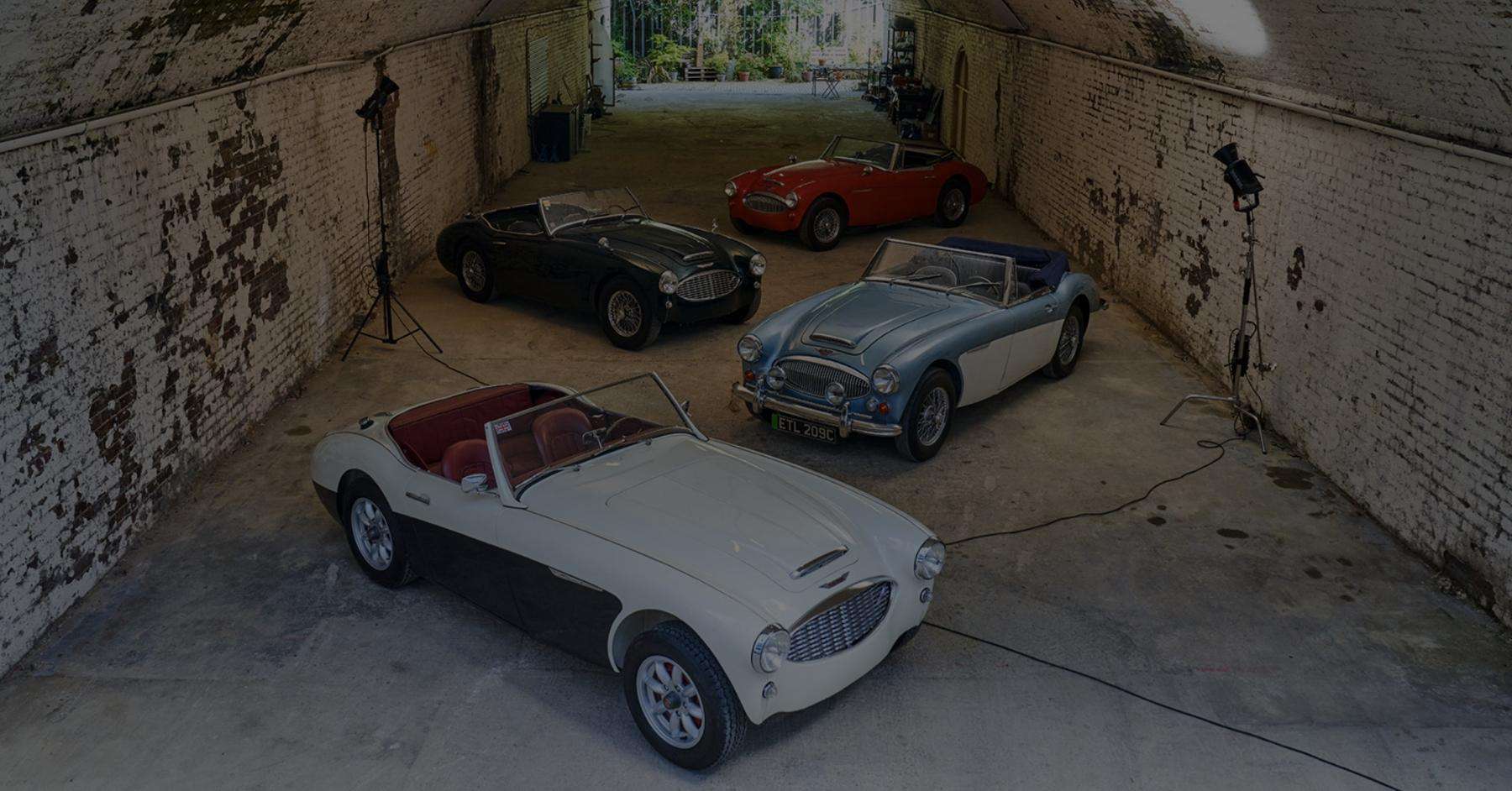
Key Performance Indicators (KPIs) for Electric classic cars
When it comes to electric classic cars, measuring success involves evaluating various aspects to ensure your investment aligns with your goals and expectations. Key Performance Indicators (KPIs) provide valuable insights into the performance and efficiency of these unique vehicles. In this chapter, we explore the essential KPIs to consider for your electric classic car journey.
1. Range and Efficiency
- Electric Range: Measure the distance your electric classic car can travel on a single charge. A higher range indicates greater efficiency and convenience for longer drives.
- Efficiency Metrics: Track efficiency metrics such as miles per kilowatt-hour (miles/kWh) to gauge how effectively your car uses energy.
2. Charging Speed and Infrastructure
- Charging Time: Monitor how long it takes to charge your electric classic car, both at home and using public charging stations.
- Charging Infrastructure: Assess the availability and accessibility of charging stations in your area, ensuring they align with your travel needs.
3. Operating Costs
- Energy Costs: Calculate the cost of electricity required for your electric classic car. Compare it to the expenses associated with gasoline classics to determine cost savings.
- Maintenance Costs: Track maintenance expenses, including routine check-ups, repairs, and component replacements. Electric classics often have lower maintenance costs due to fewer moving parts.
4. Performance and Driving Experience
- Acceleration: Measure acceleration times to assess the vehicle’s performance. Electric classics are known for instant torque, resulting in impressive acceleration.
- Driving Range: Determine how far you can comfortably drive on a single charge without range anxiety.
5. Environmental Impact
- Carbon Footprint: Calculate the carbon emissions reduction achieved by driving an electric classic car compared to a gasoline-powered classic. Monitor your contribution to a greener planet.
- Noise Reduction: Assess the reduction in noise pollution and vibrations associated with electric classic cars. Consider the impact on your local environment.
6. Battery Health and Longevity
- State of Health (SoH): Monitor the health of your electric car’s battery over time. SoH provides insights into its capacity and overall condition.
- Battery Longevity: Estimate the lifespan of your battery and plan for potential replacements or upgrades.
7. Heritage Preservation
- Historical Value: Evaluate the historical significance and originality of your electric classic car. Consider how the conversion impacts its collector’s value.
- Cultural Impact: Assess the cultural and societal impact of your electric classic car in terms of preserving automotive heritage and promoting eco-conscious values.
8. Owner Satisfaction
- Feedback and Surveys: Gather feedback from owners of electric classic cars to assess overall satisfaction, including driving experience, reliability, and eco-friendliness.
- Community Engagement: Engage with the electric classic car community to share experiences, best practices, and insights on ownership satisfaction.
9. Resale Value and Appreciation
- Resale Value: Monitor the resale value of electric classic cars in the market. Determine whether your investment appreciates over time.
- Future Demand: Predict future demand for electric classics and assess their potential as collectibles.
10. Cost of Conversion vs. Savings
- Conversion Costs: Compare the initial conversion costs with the savings accrued over time due to lower operating and maintenance costs.
- Return on Investment (ROI): Calculate the ROI of converting a classic car to electric power by considering financial benefits, resale value, and sustainability.
By tracking these KPIs, you can gain valuable insights into the performance, efficiency, and overall impact of your electric classic car. This data empowers you to make informed decisions, optimize your ownership experience, and contribute positively to a more sustainable automotive future.
History and Future
The Historical Evolution of the Electric Classic Car Movement
The electric classic car movement represents a fascinating intersection of nostalgia and innovation. In this chapter, we delve into the historical evolution of this captivating movement, tracing its roots and significant milestones.
Early Experiments: The Birth of Electric Vehicles
The idea of electric propulsion for vehicles is not a recent development. In fact, it predates the internal combustion engine. In the late 19th and early 20th centuries, electric vehicles were already on the roads. They were favored for their quiet operation and lack of exhaust emissions. This made them ideal for urban transportation.
Decline and Resurgence: Mid-20th Century to Early 21st Century
The mid 20th century saw a decline in the popularity of electric vehicles. This was because gasoline powered cars took center stage. Gasoline offered greater range and faster refueling. But electric vehicles faced limitations in terms of battery technology and charging infrastructure.
However, as environmental concerns grew in the late 20th century, the concept of electric mobility made a resurgence. This resurgence laid the foundation for the electric classic car movement we see today.
The Rise of electric classic cars: Early 21st Century
The early 21st century marked a significant turning point for electric classic cars. Several key developments contributed to their emergence:
- EV Technology Advancements: Advances in battery technology, electric motors, and power electronics improved the performance and range of electric vehicles.
- Environmental Awareness: Growing environmental awareness and concerns about air quality and climate change prompted a shift towards cleaner transportation options.
- Enthusiast-Driven Innovation: Enthusiasts and restoration experts recognized the potential of retrofitting classic cars with electric drivetrains. This grassroots movement gained momentum.
- Conversion Specialists: Companies specializing in electric classic car conversions emerged, offering expertise and solutions for enthusiasts seeking a sustainable twist on their vintage rides.

Promising Future Developments in Electric classic cars
The future of electric classic cars is promising. It offers several exciting developments:
- Advanced Battery Technology: Continued advancements in battery technology will lead to lighter, efficient and longer-lasting batteries. This will enhance range and performance of electric classic cars.
- Increased Conversion Options: As demand grows, more classic car models will become viable candidates for electric conversion, providing enthusiasts with a wider selection.
- Heritage Preservation: Efforts to preserve the historical value of classic cars during conversions will lead to improved methods and techniques that maintain original aesthetics.
- Charging Infrastructure Expansion: The expansion of charging infrastructure will make it easier for electric classic car owners to travel longer distances and explore new routes.
- Collectible Status: Electric classic cars may attain collectible status, with unique historical significance as pioneers of the sustainable automotive movement.
- Integration of Modern Amenities: Conversions will increasingly incorporate modern amenities while retaining the classic car’s charm, offering a balance of nostalgia and convenience.
- Cultural Impact: Electric classic cars will continue to influence the automotive industry and shape cultural perceptions of sustainability and heritage preservation.
Recommendations and Considerations
Recommendations for Classic Car Enthusiasts
For classic car enthusiasts considering the transition to electric classics, a few key recommendations can enhance your experience and ensure a successful conversion:
1. Research and Consultation
- Thorough Research: Begin by researching electric classic cars extensively. Understand the conversion process, available options, and associated costs.
- Consult Experts: Seek advice from experts in the field of electric classic car conversions. Their insights can help you make informed decisions.
2. Vehicle Selection
- Choose Wisely: Select a classic car that holds personal significance and aligns with your conversion goals. Consider the availability of conversion kits for your chosen model.
- Condition Matters: Evaluate the condition of the classic car before conversion. Restoration may be necessary to ensure a solid foundation.
3. Conversion Process
- Quality Conversion: Opt for a reputable conversion specialist like Revival Autos. Ensure the conversion process maintains the aesthetics and historical value of your classic car.
- Safety and Compliance: Verify that the converted vehicle complies with safety standards and local regulations for electric vehicles.
4. Charging Infrastructure
- Home Charging: If feasible, set up home charging infrastructure for convenience. Consider the installation cost and required permits.
- Plan Routes: Plan your routes to include charging stations, especially for longer journeys. Familiarize yourself with charging network options.
5. Ownership Experience
- Maintenance Schedule: Adhere to the recommended maintenance schedule for your electric classic car. Regular checks and battery care are essential.
- Join Communities: Connect with electric classic car communities and forums. Share experiences, gather tips, and engage with like-minded enthusiasts.
Essential Considerations for Potential Buyers
If you’re considering purchasing an electric classic car, whether converted or factory-made, these considerations will help you make an informed decision:
1. Budget and Financing
- Set a Budget: Determine your budget, factoring in the purchase price, potential conversion costs, and any additional modifications.
- Financing Options: Explore financing options, as electric classics may have a higher initial cost compared to their gasoline counterparts.
2. Conversion vs. Factory-Made
- Conversion or Factory-Made: Decide whether you prefer a converted classic or a factory-made electric classic car. Each option has its unique features and considerations.
3. Range and Usage
- Daily Use: Assess your daily driving needs and determine if the electric classic car’s range meets your requirements.
- Usage Patterns: Consider how often you’ll use the car for long-distance travel and ensure the range aligns with your travel plans.
4. Charging Infrastructure
- Charging Availability: Research the availability of charging infrastructure in your area and along your typical routes.
- Home Charging: If you plan to charge at home, evaluate the feasibility and costs of installing a home charging station.
5. Maintenance and Repairs
- Maintenance Costs: Inquire about maintenance costs and schedules for the specific electric classic car model you’re interested in.
- Repairs and Parts: Ensure that replacement parts and repair services are accessible and reasonably priced.
6. Historical and Collector Value
- Historical Value: Consider how the conversion or factory production impacts the historical and collector value of the car.
- Collector Status: Research the potential future collector status of the electric classic car model you’re considering.
7. Environmental Impact
- Eco-Consciousness: Assess how owning an electric classic car aligns with your environmental values and sustainability goals.
- Carbon Emissions: Compare the emissions reduction achieved with an electric classic car versus a gasoline classic.
By carefully considering these recommendations and essential factors, classic car enthusiasts and potential buyers can embark on their electric classic car journey with confidence, ensuring a rewarding and sustainable automotive experience.
Conversion Process Details
Stages and Types of Electric Classic Car Conversion
Conversion Stages
The conversion of a classic car to electric power typically follows these key stages:
1. Vehicle Inspection and Evaluation
- Assessment: The process begins with a thorough evaluation of the classic car’s condition. Technicians inspect the chassis, body, suspension, and existing drivetrain components.
- Condition Report: A condition report is generated, outlining any necessary repairs, restoration work, or upgrades needed before conversion.
2. Component Selection and Sourcing
- Selecting Components: Based on the evaluation, suitable electric components are chosen. This includes the electric motor, battery pack, power electronics, and charging system.
- Sourcing: Components may be sourced from reputable manufacturers or suppliers specializing in electric classic car conversions.
3. Removal of Internal Combustion Engine
- Engine Removal: The internal combustion engine, along with associated components such as the transmission and exhaust system, is carefully removed from the classic car.
- Drivetrain Preparation: The drivetrain is prepared for the installation of the electric motor.
4. Electric Motor Installation
- Motor Placement: The electric motor is strategically positioned within the classic car’s engine bay or another suitable location, depending on the conversion design.
- Mounting and Alignment: Precise mounting and alignment are crucial to ensure proper power transmission to the wheels.
5. Battery Integration
- Battery Pack Installation: The battery pack is installed in a secure location, often in the trunk or under the vehicle’s floor, to optimize weight distribution and safety.
- Wiring and Connections: Electrical wiring and connections are meticulously laid out to link the battery pack with the motor and other components.
6. Power Electronics and Control Systems
- Inverter and Controller: The power electronics, including the inverter and controller, are installed to manage the flow of electricity between the battery pack and motor.
- Control Programming: Custom software and control systems are programmed to ensure the efficient operation of the electric powertrain.
7. Safety and Testing
- Safety Measures: Safety features, including thermal management systems and emergency disconnects, are integrated to safeguard the electric classic car.
- Testing: Rigorous testing is conducted to ensure the functionality and safety of the converted vehicle. This includes performance tests, battery checks, and safety assessments.
8. Aesthetic and Interior Considerations
- Aesthetics: Efforts are made to maintain the classic car’s original aesthetics, including preserving the exterior and interior design.
Interior Components: The conversion may involve modifications to accommodate modern amenities while retaining the classic car’s charm.
Types of Conversion
Electric classic car conversions can vary in complexity and approach. Here are some common types:
1. Full Conversion
- Complete Overhaul: In a full conversion, the classic car undergoes a comprehensive transformation, replacing all internal combustion engine components with electric counterparts.
2. Partial Conversion
- Selective Upgrades: In a partial conversion, specific components like the engine may be replaced with electric alternatives while retaining other original parts.
3. Factory-Made Electric Classics
- Factory Production: Some companies produce electric classic cars from the ground up, offering factory-made electric classics with modern amenities and components.
Step-by-Step Process Flow for Conversion
Converting a classic car to electric power involves a systematic process flow:
- Assessment and Evaluation: Evaluate the classic car’s condition and document any required repairs or upgrades.
- Component Selection: Choose the electric motor, battery pack, and other components based on the classic car’s specifications.
- Engine Removal: Carefully remove the internal combustion engine and associated components.
- Electric Motor Installation: Position the electric motor and ensure proper alignment.
- Battery Integration: Install the battery pack securely and establish electrical connections.
- Power Electronics and Control: Install power electronics components and program control systems.
- Safety Measures: Integrate safety features and perform thorough testing for safety and functionality.
- Aesthetic Considerations: Modify the interior and exterior as necessary while preserving the classic car’s character.
Methodologies for Achieving a Seamless Conversion
Achieving a seamless conversion involves several methodologies:
- Preserving Aesthetics: Pay meticulous attention to preserving the classic car’s original aesthetics, including exterior design and interior features.
- Maintaining Historical Value: Ensure that the conversion process does not compromise the historical or collector’s value of the classic car.
- Alignment with Regulations: Comply with local regulations and safety standards for electric vehicles.
- Quality Control: Implement rigorous quality control measures during each stage of the conversion process.
- Safety First: Prioritize safety by incorporating emergency disconnects, thermal management systems, and effective fire suppression systems.
By following these stages, considering various types of conversion, and implementing best practices, classic car enthusiasts can embark on a successful journey toward owning a seamless electric classic car while preserving the charm and heritage of their beloved vehicles.
Technology Integration
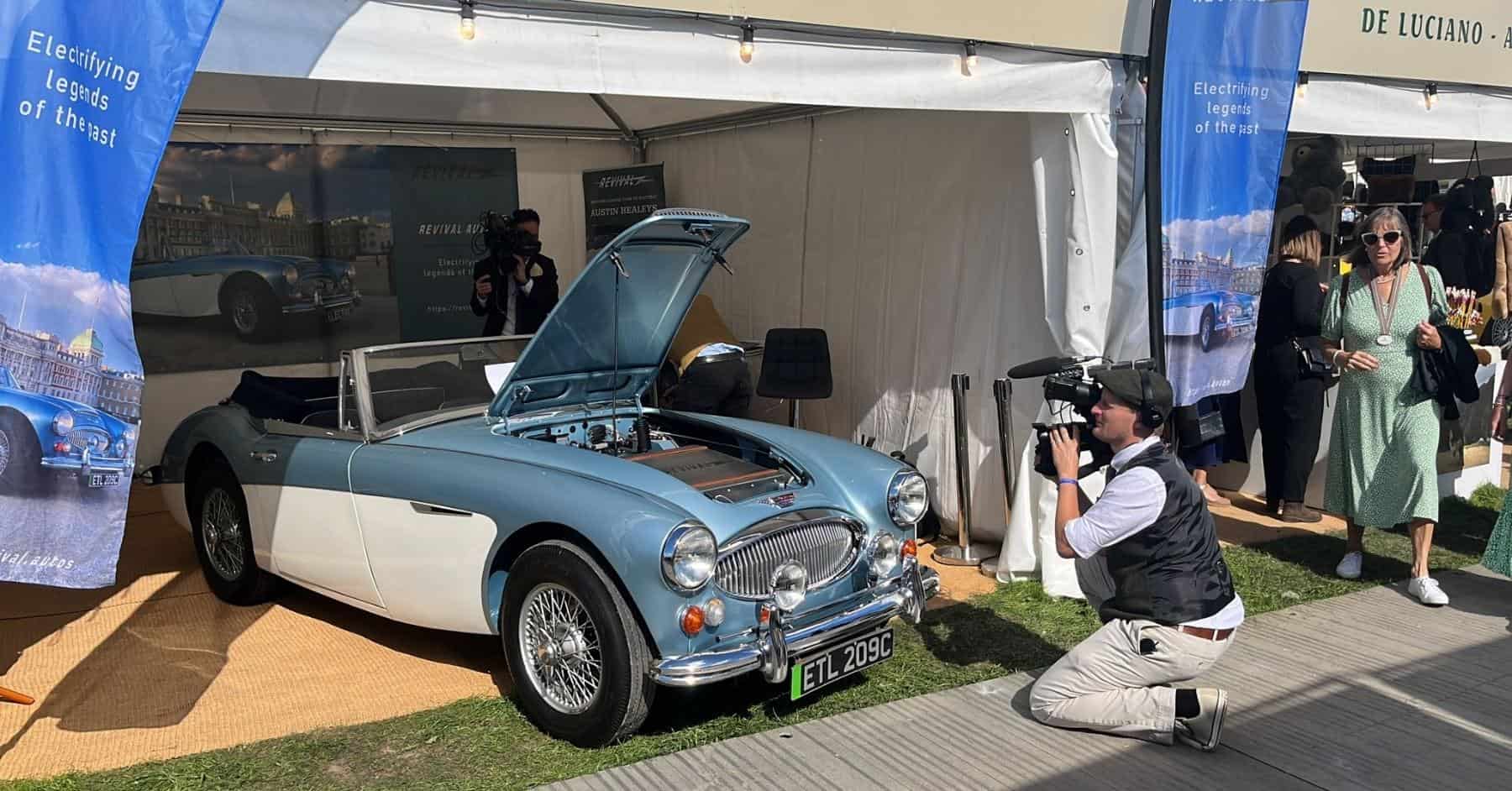
Future Trends in Electric classic cars
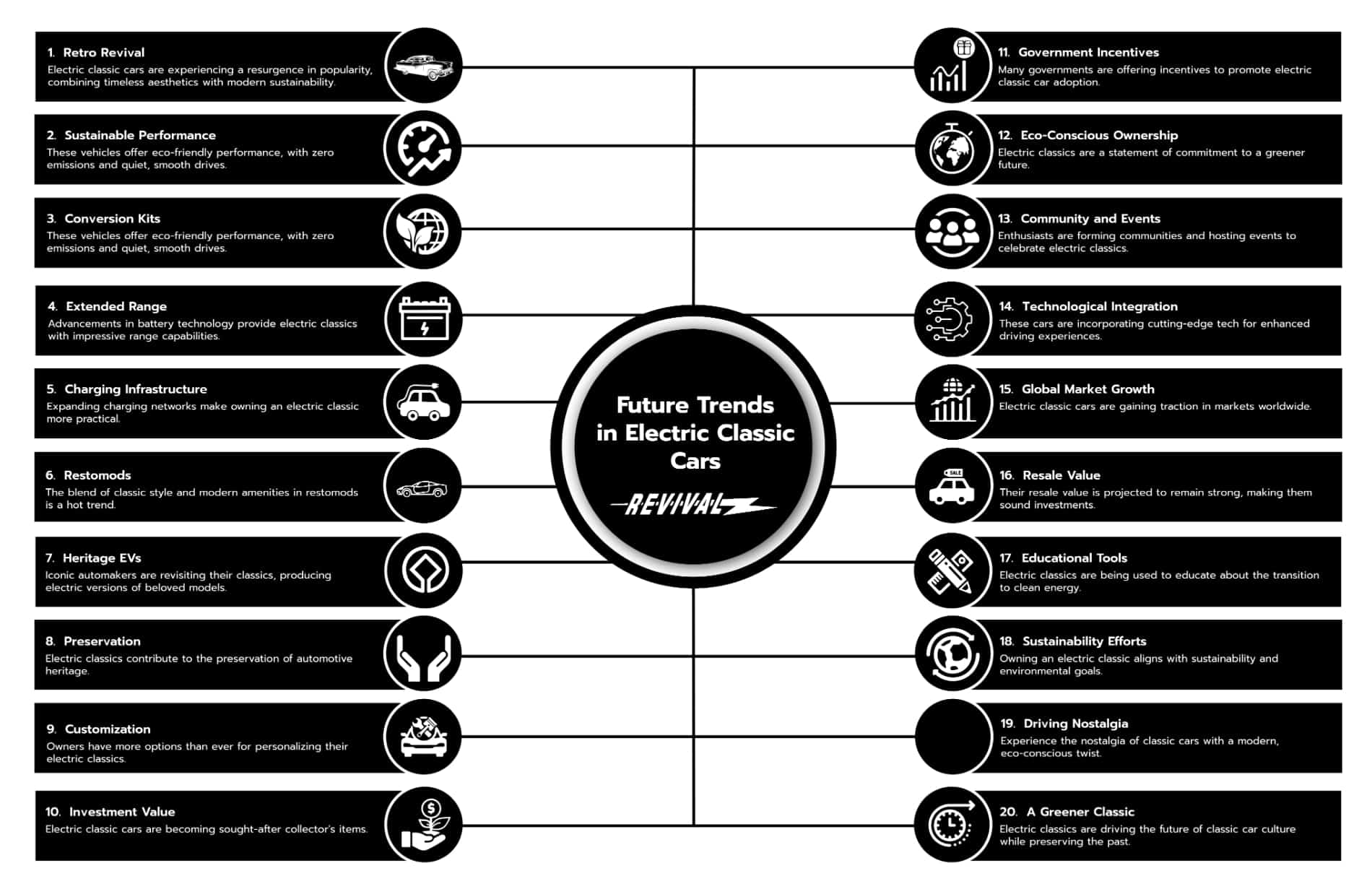
Bridging Past and Future: Technology and Software in Electric Classic Car Conversion
In the world of classic cars, where nostalgia meets innovation, technology and software play pivotal roles in the conversion process. Revival Autos seamlessly integrates cutting-edge technology to breathe new life into classic automobiles, transforming them into electric classics that bridge the past and the future.
The Essence of Technology in Conversion
At Revival Autos, technology is not just a tool; it’s the driving force behind our electric classic car conversions. Here’s how it shapes our conversion process:
1. Precision Component Selection
- Advanced Simulation: We employ advanced simulation software to select the most suitable components, ensuring optimal performance and efficiency. This includes choosing the electric motor, battery pack, and power electronics.
- Performance Modeling: Technology allows us to create detailed performance models, predicting how the converted classic car will handle various driving conditions and loads.
2. Customized Control Systems
- Digital Precision: Our engineers leverage digital control systems to fine-tune the electric powertrain’s performance. This customization ensures that the converted classic car operates seamlessly and efficiently.
- Real-time Monitoring: Revival Autos’s conversion process includes real-time monitoring capabilities, allowing us to track the vehicle’s performance and make adjustments as needed.
3. Software Optimization
- Efficiency Algorithms: Sophisticated algorithms are employed to optimize power distribution and battery management, enhancing both performance and range.
- Regenerative Braking: We implement regenerative braking software, enabling the classic car to recapture energy during deceleration, thus increasing overall efficiency.
4. Safety and Diagnostics
- Advanced Diagnostics: Our conversion process integrates advanced diagnostic software to identify and address potential issues before they become critical, ensuring the long-term reliability of the electric classic car.
- Emergency Protocols: In the realm of safety, technology enables the implementation of emergency protocols, such as rapid battery disconnection in the event of a malfunction.
The Marriage of Classic Aesthetics and Modern Technology
One of Revival Autos’s hallmarks is the seamless blend of classic aesthetics with modern technology. Here’s how we achieve this:
1. Aesthetic Preservation
- Digital Prototyping: We employ digital prototyping techniques to design custom components that seamlessly integrate with the classic car’s existing aesthetics.
- 3D Printing: 3D printing technology allows us to create bespoke parts and components that match the classic car’s original design, maintaining its historical integrity.
2. Interior Comfort and Convenience
- Infotainment Integration: Revival Autos offers the option to integrate modern infotainment systems into the classic car’s interior while preserving the vintage appeal.
- Climate Control:* We utilize advanced climate control systems to ensure passenger comfort, adapting them to the classic car’s cabin.
3. User-Friendly Interface
- Intuitive Interface: Technology also extends to the user interface, where we design intuitive control panels and displays for the driver’s convenience.
- Seamless Connectivity: Revival Autos’s conversions often include connectivity features, allowing drivers to pair their smartphones and access navigation and entertainment services.
The Future of Electric Classic Car Technology
As technology continues to advance, so does the potential for electric classic cars. Revival Autos is committed to staying at the forefront of innovation in the following ways:
1. Battery Technology
- Enhanced Energy Density: We closely monitor developments in battery technology to offer our customers improved energy density, resulting in longer ranges and increased performance.
- Fast Charging: Our dedication to technology extends to fast-charging solutions, reducing charging times and enhancing the practicality of electric classic cars.
2. Autonomous Features
- Safety Innovations: Revival Autos explores autonomous safety features that can be integrated into electric classic cars, enhancing driver safety and convenience.
- Advanced Driver Assistance: We keep an eye on advancements in driver assistance technology, evaluating how these features can be tailored to the unique needs of classic car enthusiasts.
3. Sustainable Materials
- Eco-Friendly Choices: Revival Autos continuously seeks sustainable materials and manufacturing processes to reduce our environmental footprint.
- Recyclability: We explore options for making electric classic car components more recyclable, contributing to a greener future.
Technology and software are not just tools at Revival Autos; they are the bridge that connects the timeless allure of classic cars with the innovation of the electric era. Our commitment to staying on the cutting edge ensures that our conversions are not just a step into the future but a leap into the future of classic motoring.
Final Thoughts
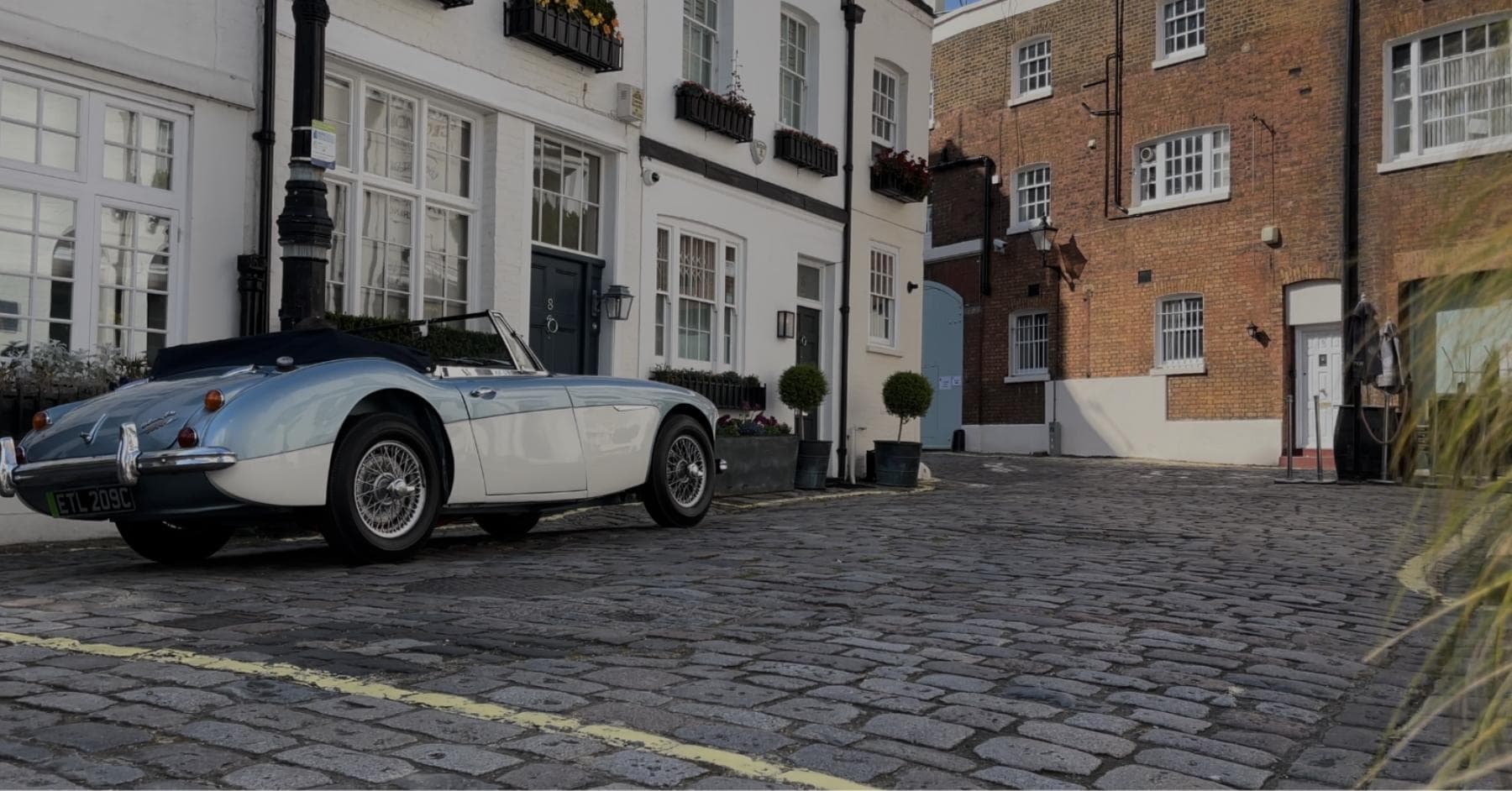
Embracing the Future: The Significance and Prospects of Electric classic cars
As we draw the curtain on this exhilarating journey through the world of electric classic cars, it’s essential to reflect on the remarkable significance and exciting prospects that lie ahead. Revival Autos, as a pioneer in the field, is proud to have been your guide on this electrifying adventure.
Summarizing the Journey
Our journey began with an exploration of the history and evolution of electric classic cars, tracing their roots from the early 21st century to their current status as icons of sustainability. We discovered how these timeless vehicles have transformed, offering both environmental benefits and cost-efficiency without compromising on performance.
The process of converting a classic car to electric power was unveiled, showcasing the meticulous stages involved, the various types of conversions, and the methodologies that ensure a seamless transition. Revival Autos’s commitment to preserving aesthetics and integrating modern technology was at the forefront of this transformation.
We embarked on a comparative analysis, pitting electric classic cars against their gasoline counterparts. The advantages of zero emissions, lower operating costs, and impressive performance were juxtaposed with challenges such as range limitations and charging infrastructure.
Best practices, strategies, and the importance of preserving automotive heritage were emphasized as essential aspects of the electric classic car experience. Revival Autos’s dedication to sustainable ownership and eco-conscious practices shone through.
A comprehensive list of pros and cons laid out the benefits and considerations that classic car enthusiasts must weigh when considering an electric conversion. A detailed examination of key performance indicators shed light on how to measure the success of an electric classic car.
The historical evolution of the electric classic car movement and promising future developments unveiled the growing popularity of these vehicles and the potential for even more seamless conversions and an expanding market. Revival Autos’s commitment to pushing the boundaries of innovation was highlighted.
We offered recommendations for classic car enthusiasts and essential considerations for potential buyers, ensuring that the journey toward electric classic car ownership is as informed as it is exciting.
The intricacies of technology integration and software in electric classic car conversion showcased how Revival Autos brings together the best of the past and the future. The marriage of classic aesthetics with modern technology forms the very essence of our conversions, offering a unique and enriching driving experience.
Prospects and Future Direction
The future of electric classic cars is undeniably bright. With advancements in battery technology, fast charging solutions, and potential autonomous features, the possibilities are limitless. Revival Autos is poised to lead the charge in this sustainable luxury market, delivering factory-made electric classics that redefine the industry.
In conclusion, electric classic cars represent more than just a mode of transportation. They are a testament to human ingenuity, a bridge between eras, and a statement of our commitment to a sustainable future. At Revival Autos, we are not merely converting classic cars; we are revitalizing automotive history and creating a legacy that future generations will cherish.
Thank you for joining us on this electrifying journey.
The road ahead is filled with promise. Revival Autos is excited to be at the forefront of this remarkable transformation. Here is to the future of classic motoring where luxury meets sustainability and past meets the future.
FAQs
Frequently Asked Questions about Electric classic cars
Electric classic cars represent an exciting fusion of vintage aesthetics and modern sustainability. As a pioneer in the field, Revival Autos understands that you may have questions about this innovative concept. In this chapter, we provide answers to some of the most frequently asked questions to help you navigate the world of electric classic cars with confidence.
What are Electric classic cars?
Electric classic cars or ECCs are a brilliant fusion of timeless automotive design and cutting-edge electric vehicle technology. They are classic cars from bygone eras that have been meticulously converted into electric vehicles. These conversions involve replacing the traditional internal combustion engine with an electric motor, and often upgrading powertrain batteries, and other components to modern electric standards while preserving vehicle’s iconic aesthetics.
What are benefits of Electric classic cars?
The benefits of Electric classic cars are manifold. Firstly, they offer charm of vintage automobiles combined with the eco friendly of electric mobility. They also provide quiet, emissions free driving experiences. It also offers lower operating costs and reduced dependence on fossil fuels. Furthermore, ECCs often exhibit impressive performance improvements and contribute to preservation of classic car heritage.
Are Electric classic cars eco-friendly?
Yes, Electric classic cars are environmentally friendly. By replacing internal combustion engines with electric motors ECCs eliminate carbon footprint. They are useful in reducing air pollution and greenhouse gas. This is a vital step toward combating climate change.
What are environmental benefits of driving an electric classic car?
Driving an electric classic car brings several environmental benefits. These include reduced air pollution quieter streets due to decreased noise pollution, and a lower overall carbon footprint. ECCs contribute to cleaner air quality and help conserve natural resources by reducing the demand for fossil fuels.
What is performance of an electric classic car like?
The performance of an electric classic car can be quite impressive. Electric motors deliver instant torque providing brisk acceleration and a smooth, silent ride. ECCs often have enhanced handling and can offer a satisfying driving experience comparable or even superior to their gasoline-powered counterparts.
How does performance of Electric classic cars compare to gasoline-powered ones?
Electric classic cars can offer competitive or superior performance compared to their gasoline-powered counterparts. They typically have excellent torque delivery, quicker acceleration and quieter operation. While car top speeds may vary, the overall driving experience in terms of power and responsiveness is often exceptional.
How long does it take to charge electric classic car?
The charging time for an electric classic car depends on several factors including vehicle’s battery capacity charging infrastructure used and state of charge when plugging in. Generally, using standard Level 2 charger it can take anywhere from a few hours to overnight to fully charge an ECC.
How far can an electric classic car travel on a single charge?
The range of an electric classic car on a single charge varies depending on the specific vehicle and its battery capacity. Some ECCs can achieve ranges of 100 miles or more, while o rs with larger battery packs can exceed 200 miles or even more making them suitable for daily driving and longer trips.
What is range of an Electric Classic Car on a full charge?
The range of an Electric Classic Car on a full charge depends on the vehicle’s battery size and efficiency. It can range from around 50 miles for smaller conversions to over 200 miles for those equipped with larger battery packs. This range is continually improving as battery technology advances.
How long does battery last in an Electric Classic Car?
The lifespan of the battery in an Electric Classic Car can vary but is typically designed to last for many years. With proper maintenance and usage, batteries can endure 100,000 miles or more before showing significant degradation. Advances in battery technology continue to extend ir longevity.
Is it difficult to maintain an electric classic car?
Maintaining an electric classic car is generally less complex than maintaining a traditional gasoline-powered classic car. ECCs have fewer moving parts require fewer oil changes, and have longer service intervals. However finding qualified technicians for electric components may require some effort, but it’s becoming easier as electric cars gain popularity.
Are electric classic cars reliable?
Electric classic cars are known for their reliability. With fewer moving parts re are fewer components that can fail compared to traditional classic cars. Electric drivetrains are robust and often require less maintenance, making ECCs a reliable choice for enthusiasts.
Do Electric classic cars retain their original value?
In general Electric classic cars tend to retain or even increase in value over time. Their uniqueness, combined with growing interest in electric vehicles can make them highly sought-after by collectors. Well-executed conversions that preserve original aesthetics can fetch a premium on market.
Can any classic car be converted into an electric classic car?
While many classic cars can be converted, it’s essential to consult with experts to determine feasibility and compatibility. Factors such as the car’s condition, structural integrity, and available space for electric components must be considered.
Are electric classic cars as fast as their gasoline counterparts?
Electric classic cars often offer impressive acceleration due to instant torque from electric motors. They can deliver quick and exhilarating performance, sometimes surpassing their gasoline counterparts.
What is the average cost of converting a classic car to electric?
Conversion costs vary depending on the car’s make, model, and the desired features. It’s advisable to get quotes from conversion specialists to get a precise estimate. Revival Autos offers a range of conversion options to suit different budgets.
Do electric classic cars have a limited range?
The range of an electric classic car depends on the battery capacity and the type of conversion. Some electric classics can achieve competitive ranges, especially with advancements in battery technology and fast-charging solutions.
Are there any government incentives for owning electric classic cars?
In some regions, incentives may be available to promote the adoption of electric vehicles, including classics. These incentives can include tax credits, rebates, or exemptions. It’s recommended to check with local authorities for specific details and eligibility.
How do I maintain an electric classic car?
Maintenance for electric classic cars is generally less frequent and less complicated than for gasoline counterparts. Routine maintenance includes checking the battery, electrical components, and brakes. Revival Autos provides guidelines for maintenance with every conversion.
Can I retrofit modern amenities into my converted electric classic car?
Yes, Revival Autos offers the option to integrate modern amenities like touchscreen infotainment systems, climate control, and advanced safety features while preserving the classic car’s aesthetics. We strive to create a blend of vintage charm and contemporary convenience.
Are there charging stations available for electric classic cars?
Charging infrastructure for electric vehicles, including classics, is expanding globally. Although there are not extensive as traditional gasoline stations, there are charging solutions available. For example, home chargers and public charging networks.
How long is conversion process?
The duration of a conversion project varies depending on complexity of the conversion. It can take time to check availability of components and specific requirements of the classic car. Revival Autos provides estimated project timelines during consultation phase.
What warranties are offered for converted electric classic cars?
Revival Autos offers warranties for our conversion work and the electric components used. The specifics of the warranty will be discussed and provided to customers during the conversion process.
Navigating the world of electric classic cars may raise additional questions specific to your situation. Revival Autos is here to provide guidance, expertise, and personalized solutions to ensure that your journey into electric classic car ownership is as seamless and enjoyable as possible.
Which company specializes in electric classic car conversion?
One notable company specializing in electric classic car conversions is “Revival Autos.” They are at the forefront of this transformative industry, known for ir expertise in preserving the timeless beauty of classic cars while upgrading m with modern electric technology.
Where can I get my classic car converted to electric?
To get your classic car converted to electric you can explore specialty shops and conversion experts like “Revival Autos.” Additionally, researching local automotive electric conversion shops or seeking recommendations from classic car enthusiasts can help you find suitable options.
How much does it cost to convert a classic car to electric?
The cost of converting a classic car to electric varies widely based on the vehicle’s make and model desired range, and the quality of components used. It is important to consult with conversion specialists like Auto Revival to get an accurate estimate for your specific project.
Are there any government incentives for converting a classic car to electric?
Government incentives for converting classic cars to electric vary by region and may include tax credits, rebates or grants aimed at promoting electric vehicle adoption. Be sure to check with local and national authorities to see if any incentives apply to your conversion project.
Are there tax incentives for converting classic cars to electric?
Tax incentives for converting classic cars to electric can exist in some regions. These incentives might include tax credits or deductions related to cost of the conversion. It’s advisable to consult with tax professionals or government agencies to explore potential tax benefits.
What is future of electric classic cars?
The future of electric classic cars looks promising. As technology advances and battery costs decrease, more enthusiasts are likely to embrace electric conversions. This trend will likely lead to increased availability improved range, and even more faithful preservation of classic car aesthetics.
How does Revival Autos lead transformation in Electric classic cars conversions?
Revival Autos stands at the forefront of Electric classic cars conversion industry through their commitment to excellence and innovation. They blend technical expertise with an unwavering dedication to preserving original character of classic cars while seamlessly integrating modern electric powertrains. Their conversions not only meet but exceed the expectations of classic car enthusiasts setting a high standard for future of ECCs. Revival Autos continues to pave the way for a sustainable and exhilarating future in classic car restoration and electrification.
About Revival Autos
Transforming Classics: An Overview of Revival Autos
At Revival Autos, we specialize in a remarkable and innovative endeavor – the conversion of classic cars into electric marvels. Our unwavering commitment to excellence has earned us a reputation as a leader in the field of electric classic car conversions. In this chapter, we provide an overview of Revival Autos and our expertise in breathing new life into iconic classics.
The Revival Autos Difference
Revival Autos stands at the forefront of a transformative movement that combines the cherished nostalgia of classic cars with the eco-conscious power of electric vehicles. Our core mission is to preserve the timeless beauty and historical significance of classic automobiles while aligning them with modern sustainability and innovation.
Our Electric Classics
At Revival Autos, we take immense pride in offering a carefully curated selection of electric classic cars. Our featured electric classics include:
1. Austin Healey 100
- A Classic Icon: The Austin Healey 100 is a classic British sports car known for its timeless design and exhilarating performance. Our electric conversion breathes new life into this icon, delivering impressive power while maintaining its vintage charm.
2. Austin Healey 3000
- A British Legend: The Austin Healey 3000 is a legendary classic car that has captured the hearts of enthusiasts for generations. Our conversion ensures that this British masterpiece continues to captivate with electrifying performance.
Expertise in Electric Classic Car Conversion
Revival Autos’ expertise in electric classic car conversion is the cornerstone of our success. Here’s what sets us apart:
1. Meticulous Craftsmanship
- Preserving Aesthetics: Our skilled craftsmen meticulously preserve the aesthetics of classic cars during conversion, ensuring that every detail, from the exterior design to the interior ambiance, remains true to the original.
- Seamless Integration: We seamlessly integrate modern electric components while maintaining the classic car’s historical integrity, resulting in a harmonious blend of old and new.
2. Cutting-Edge Technology
- Advanced Components: Revival Autos carefully selects and sources cutting-edge electric components, including motors, battery packs, and power electronics, to ensure optimal performance and efficiency.
- Digital Precision: We leverage advanced simulation and modeling software to achieve precision in component selection, performance optimization, and safety.
3. User-Centric Approach
- Modern Comforts: While preserving classic aesthetics, we offer the option to integrate modern amenities such as infotainment systems, climate control, and safety features, enhancing the overall driving experience.
- Tailored Solutions: Our conversions are tailored to meet the unique preferences and requirements of classic car enthusiasts, ensuring that each converted vehicle is a reflection of its owner’s vision.
4. Safety and Reliability
- Safety First: Revival Autos prioritizes safety with the integration of advanced safety features, emergency disconnects, and comprehensive diagnostic systems, providing peace of mind for owners.
5. Reliability Guaranteed
- Rigorous testing and quality control measures are implemented to guarantee the reliability and longevity of our conversions.
At Revival Autos, we are not merely converting classic cars. We are revitalizing automotive heritage and leading charge toward a greener and more eco conscious automotive world. Join us on this electrifying journey where luxury meets sustainability, and the past meets the future.
Useful Resources
- Electric classic cars for Sale
- How To Turn A Classic Car Into An Electric Car
- How To Make A Classic Car Electric
- How to Convert a Classic Car to Electric
- How Much to Convert a Classic Car to Electric
- Can You Convert a Classic Car to Electric
- Classic Car Electric Conversion
- Electric Vintage Cars
- Electric Classic Car Conversion Company
- Electric Car Conversion Companies
- Electric classic cars Kits
- Electric Motor Conversions For Classic Cars
- Electric Car Conversion Companies in the USA
- Electric Conversions For Classic Cars
- Electric Car Conversion Near Me
- Electric Car Conversion Cost
- Converting a Classic Car to Electric
- How to Convert a Car to Electric
- Electric Car Conversion Near You
- Classic Car Conversion To Electric
- How Much To Convert A Car To Electric
- Cost to Convert a Car to Electric
- High-Performance Electric Car Conversion Kit
- Classic Car EV Conversion
- Electric Car Conversion Companies
- How to Convert a Car to Electric
- Electric Car Conversion Kit Price
- Vintage Electric Cars
- Car Conversion to Electric
- Converting a Car to Electric
- Electric Car Conversion Kit
Igniting Nostalgia, Driving Tomorrow
Ready to embark on a timeless journey? Explore our collection of electric classic cars today and experience the elegance of the future.
Start your electrifying adventure now!
